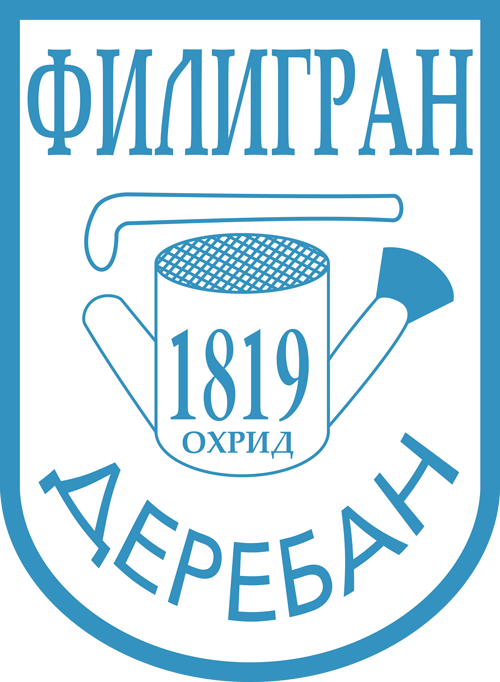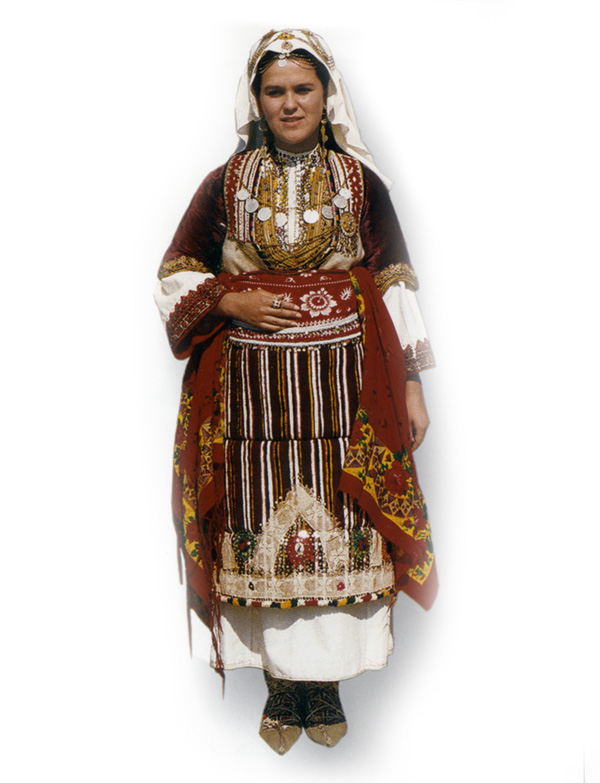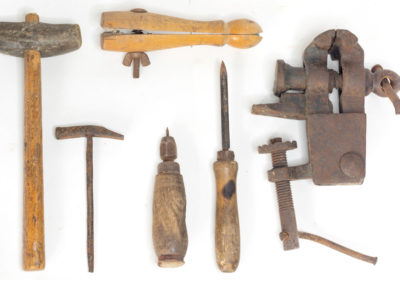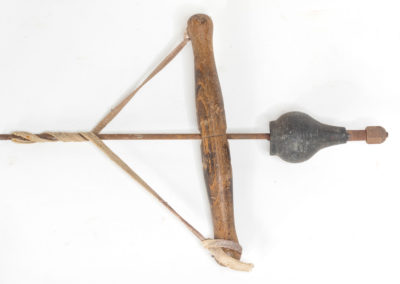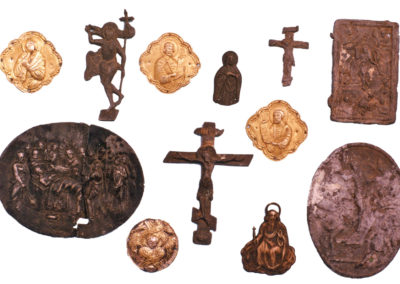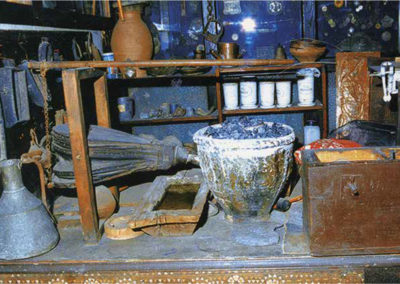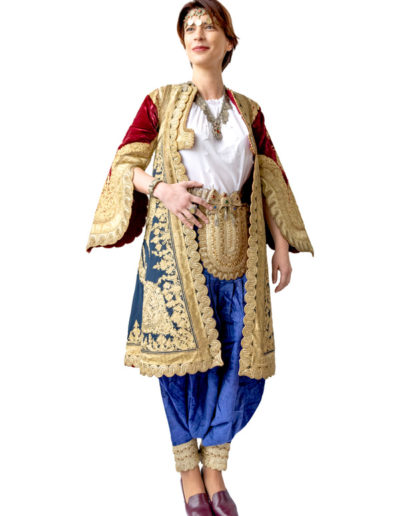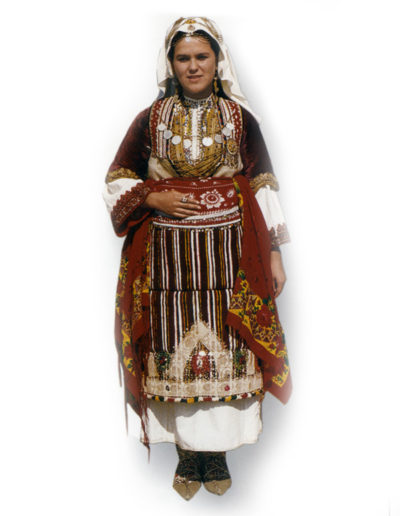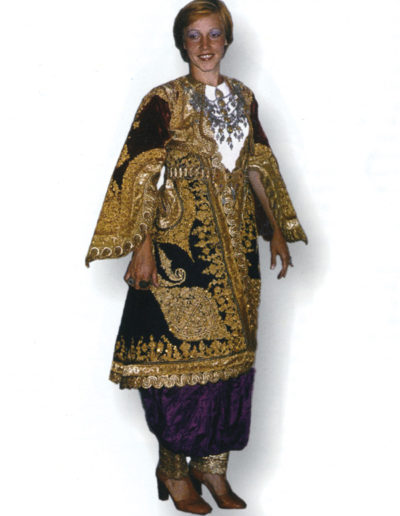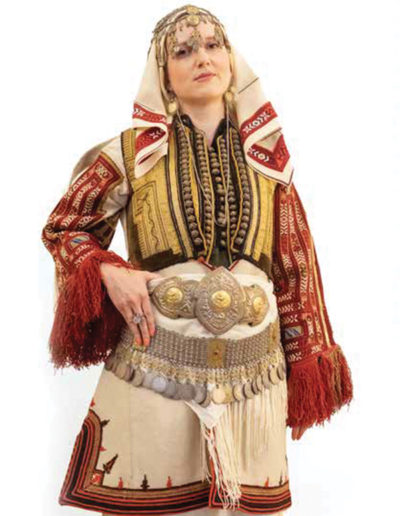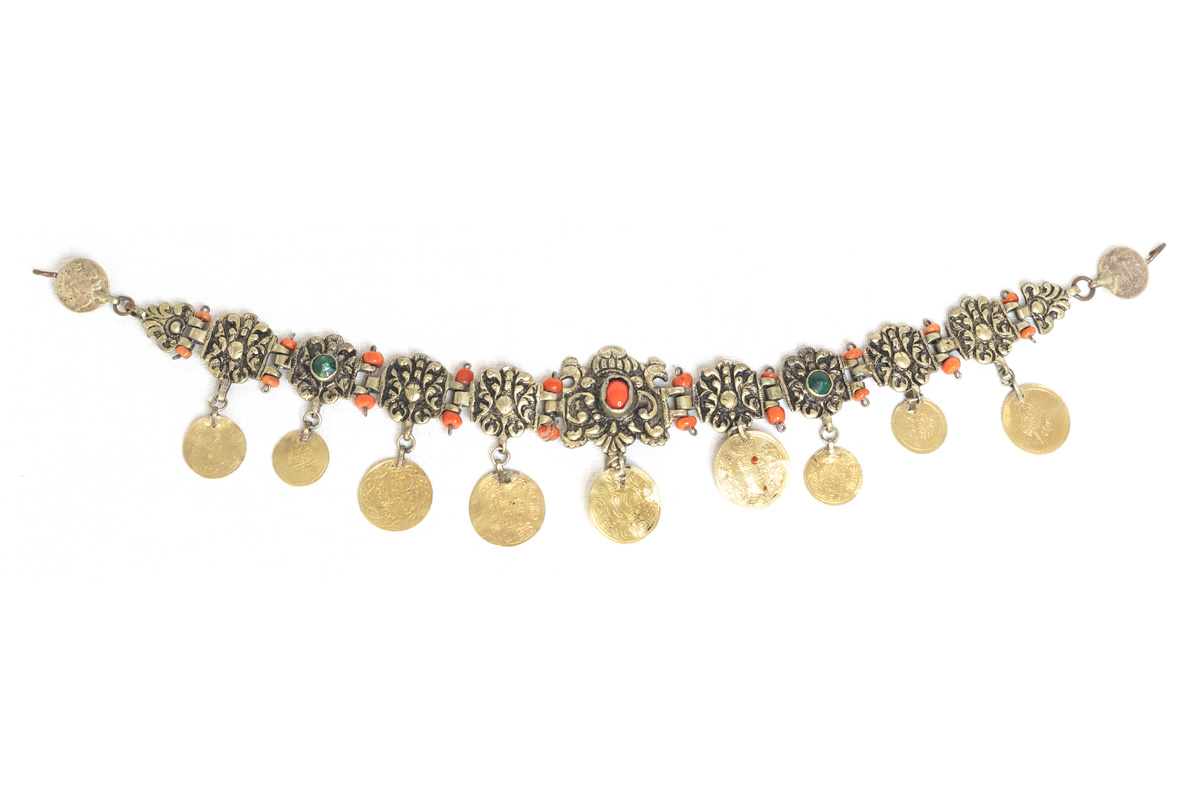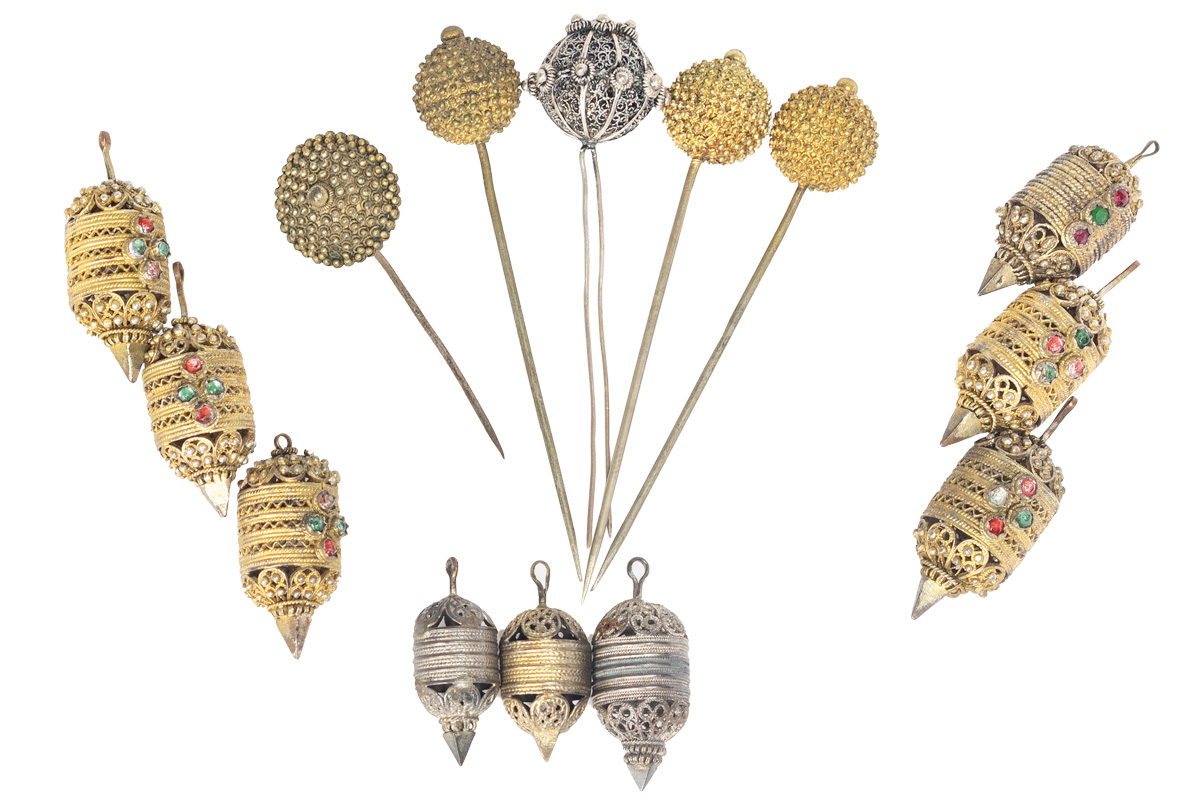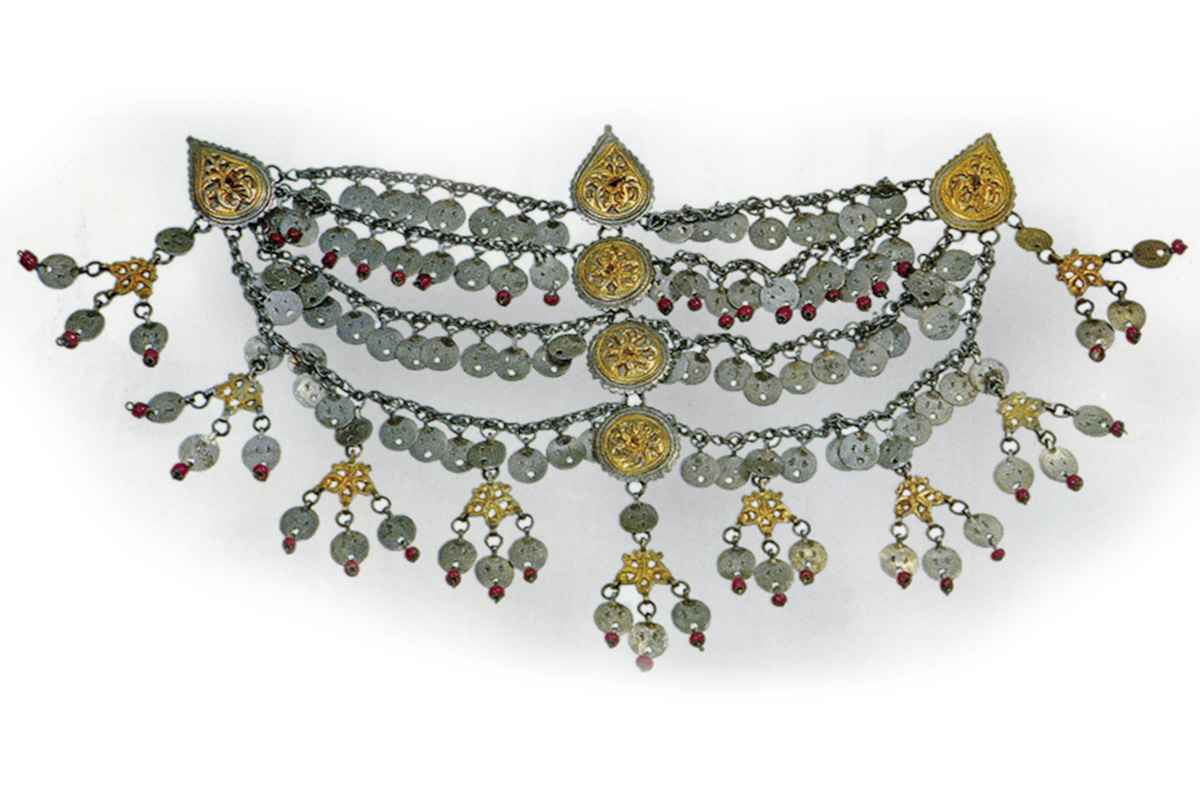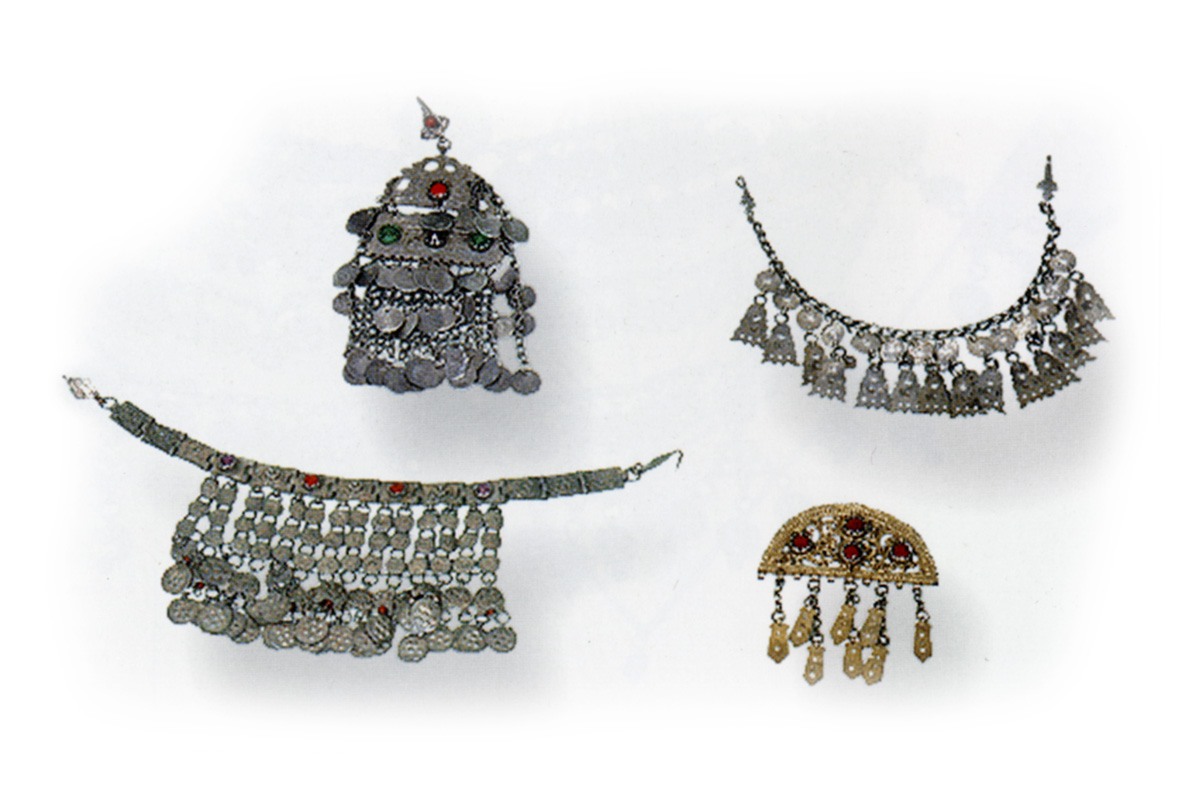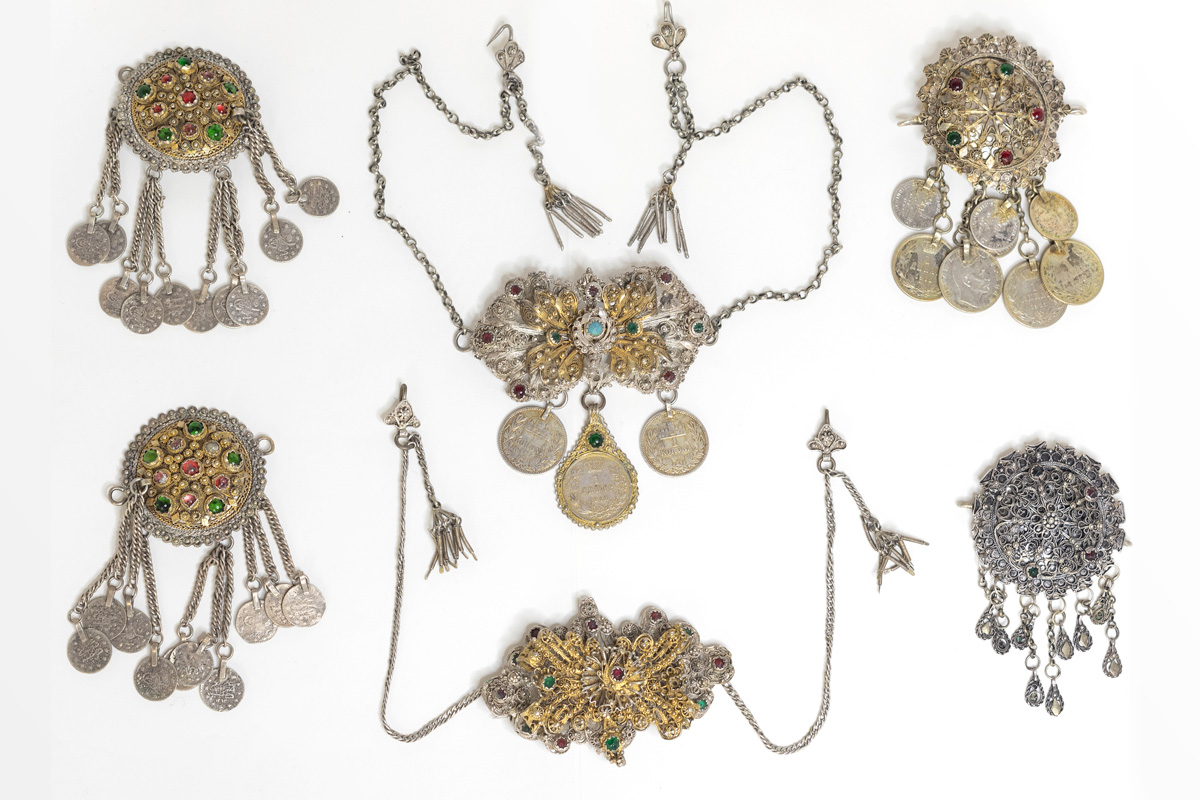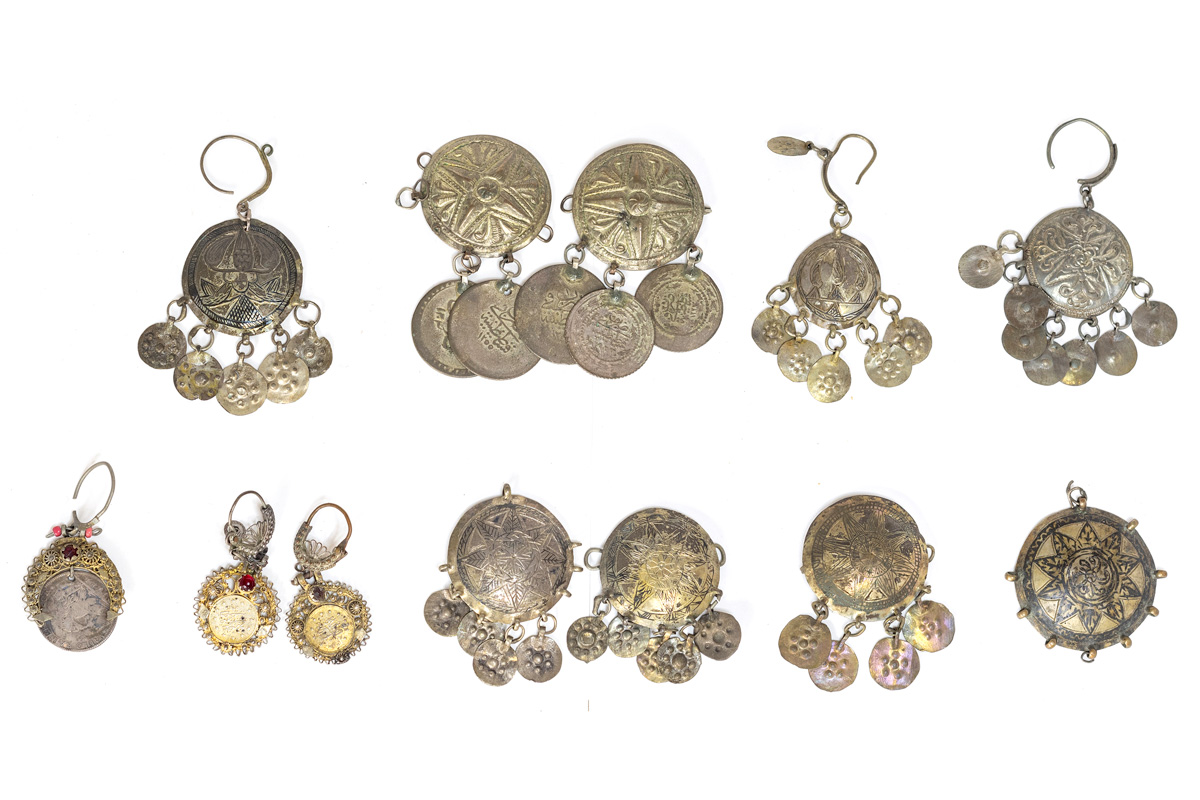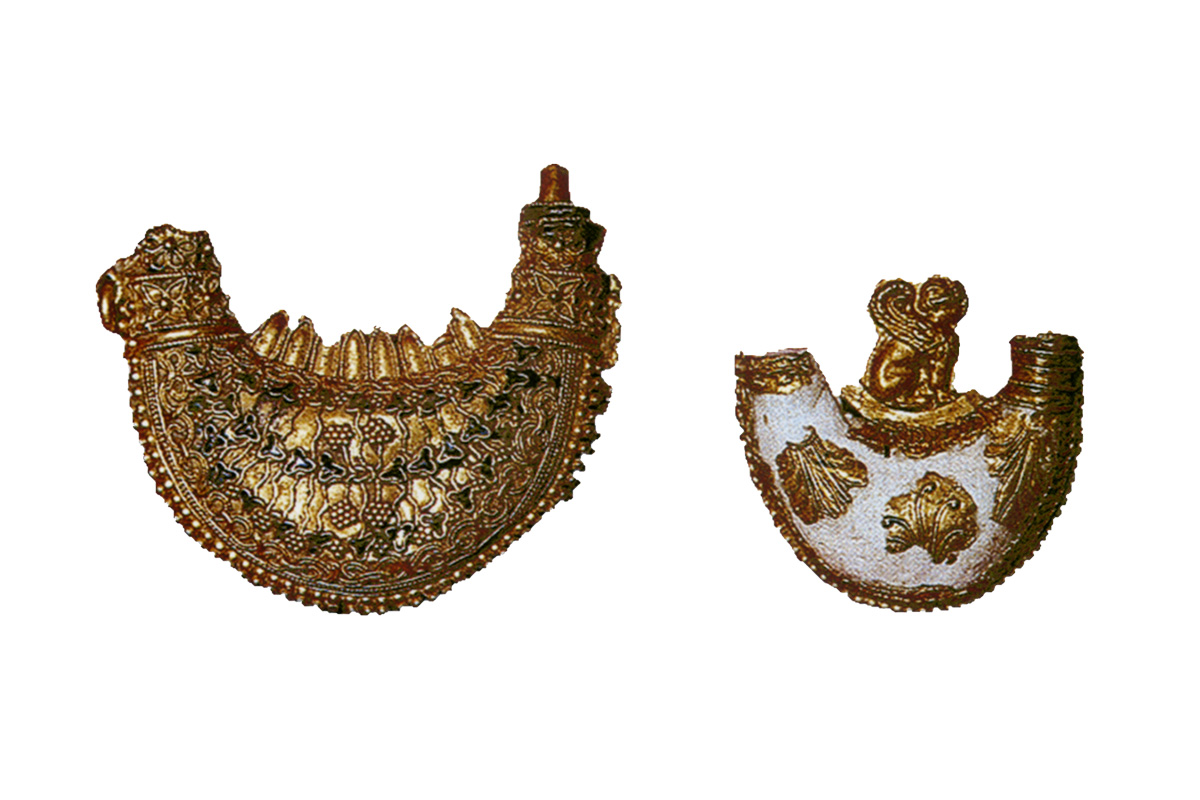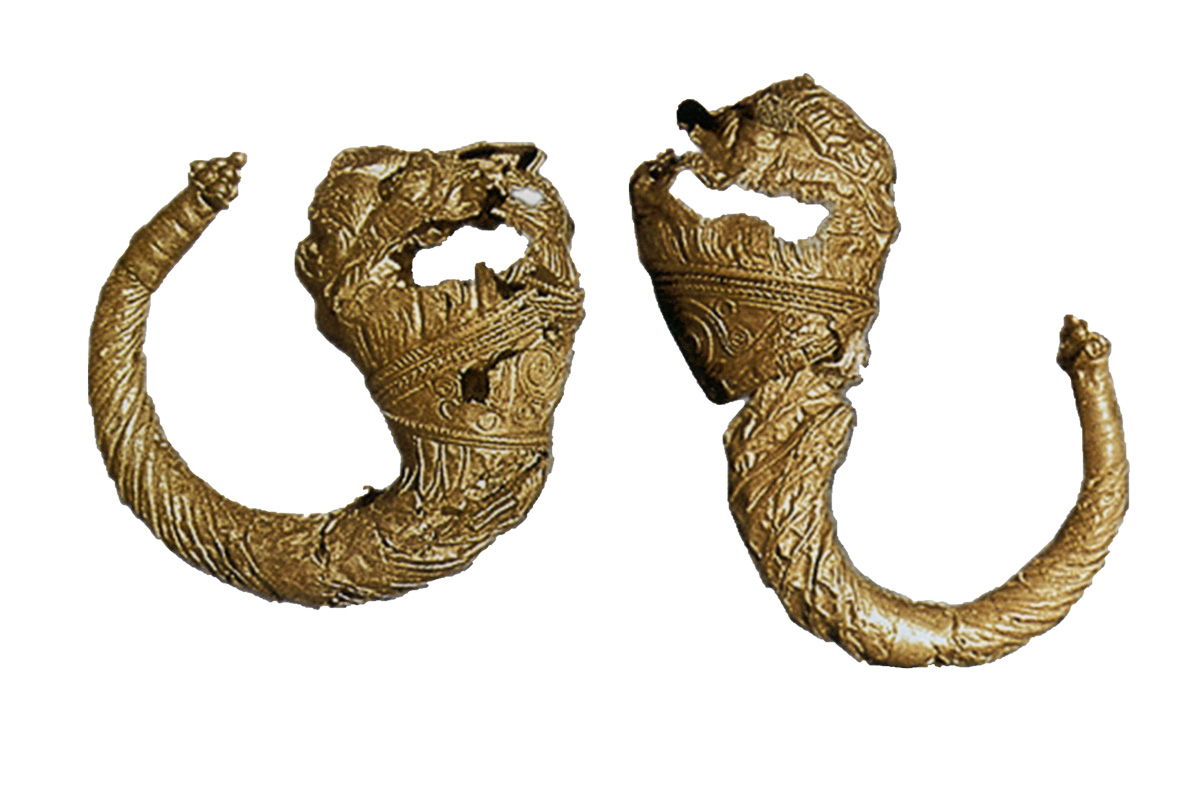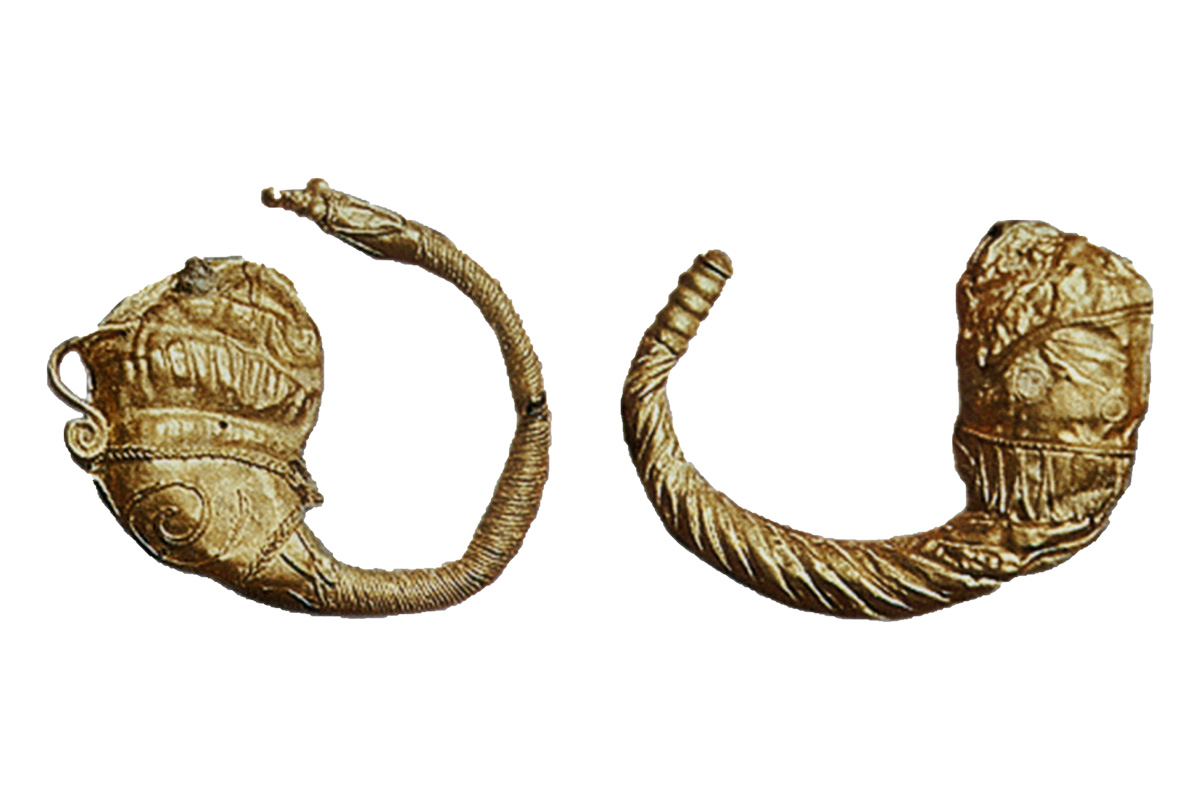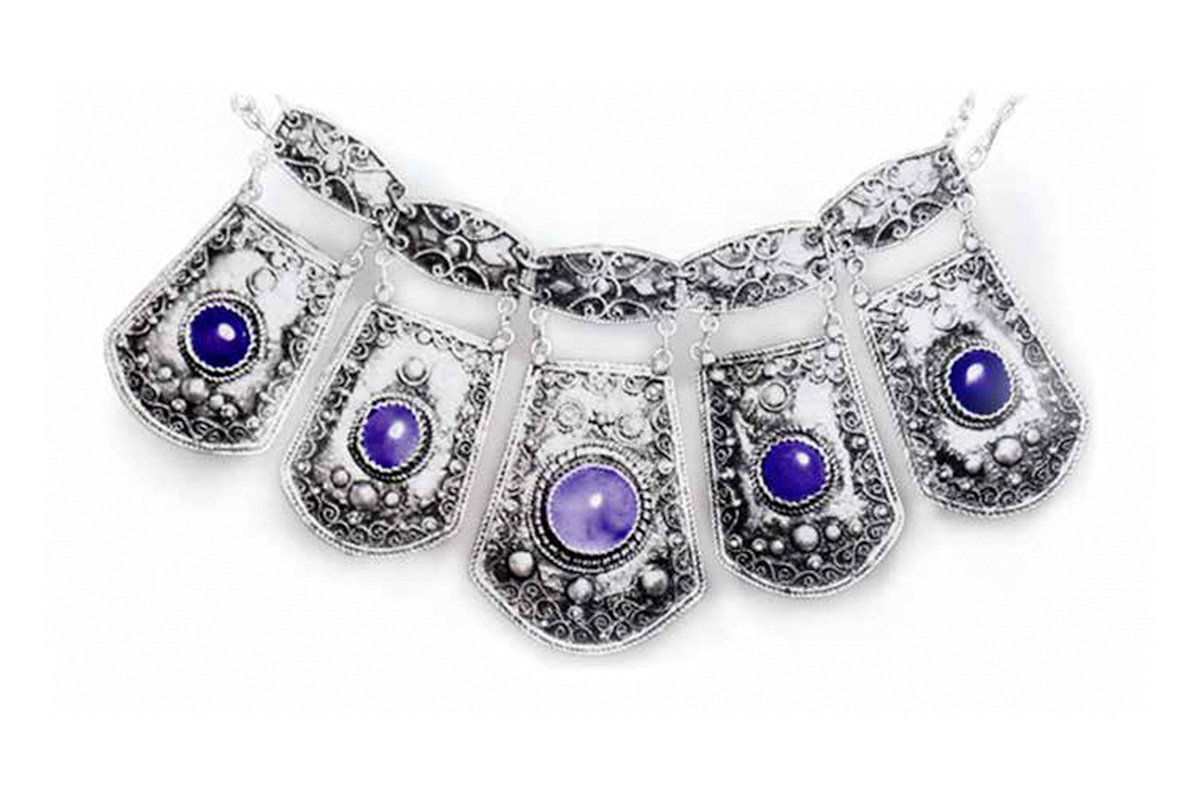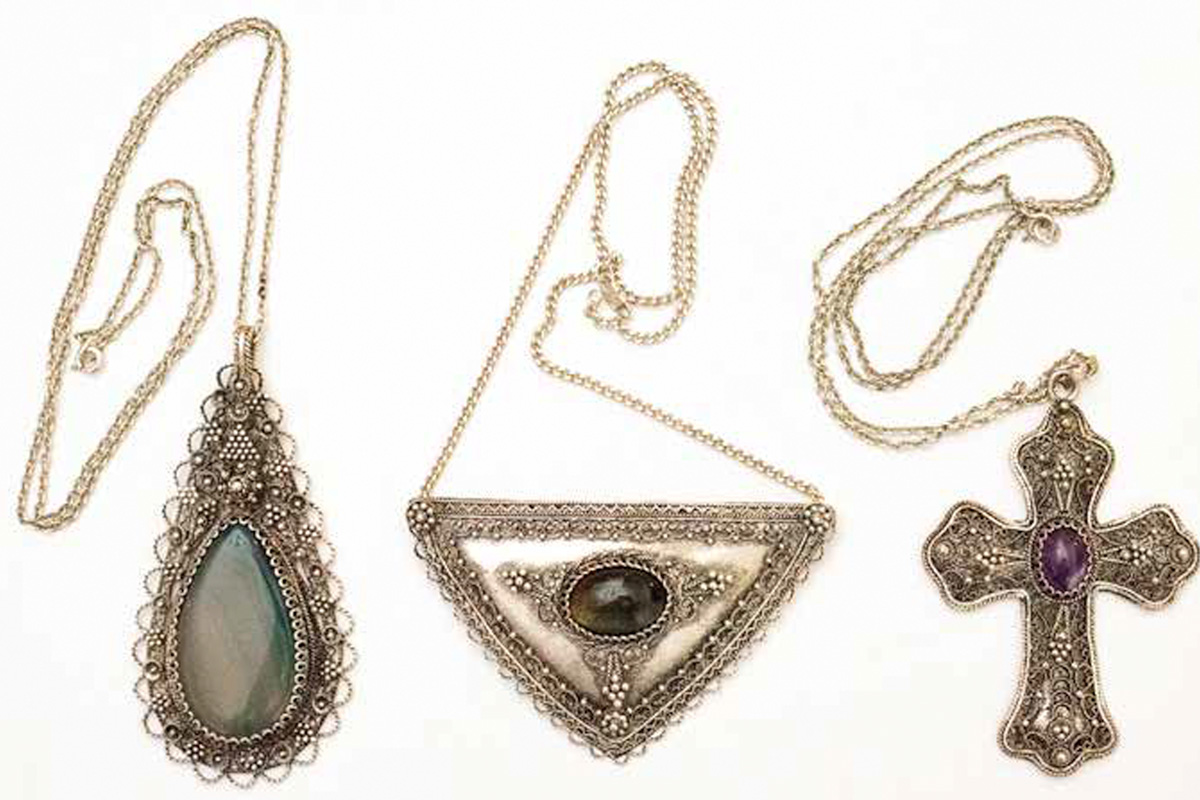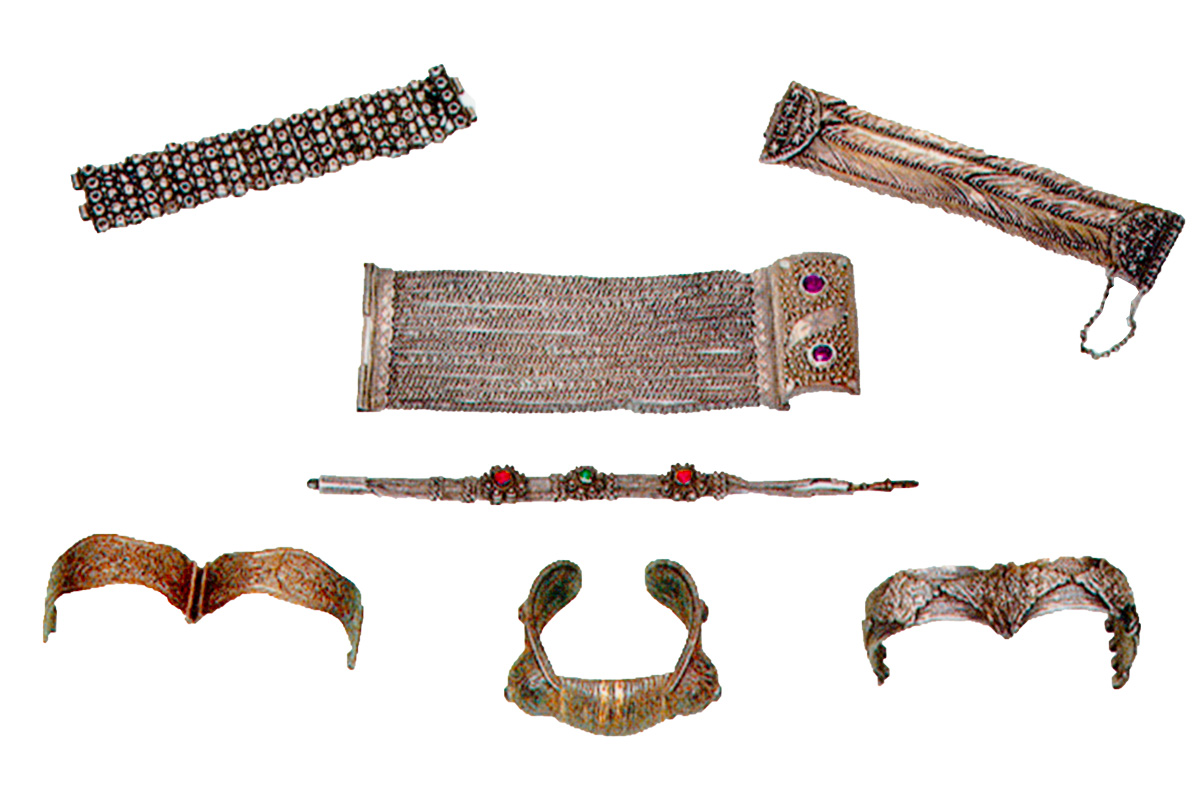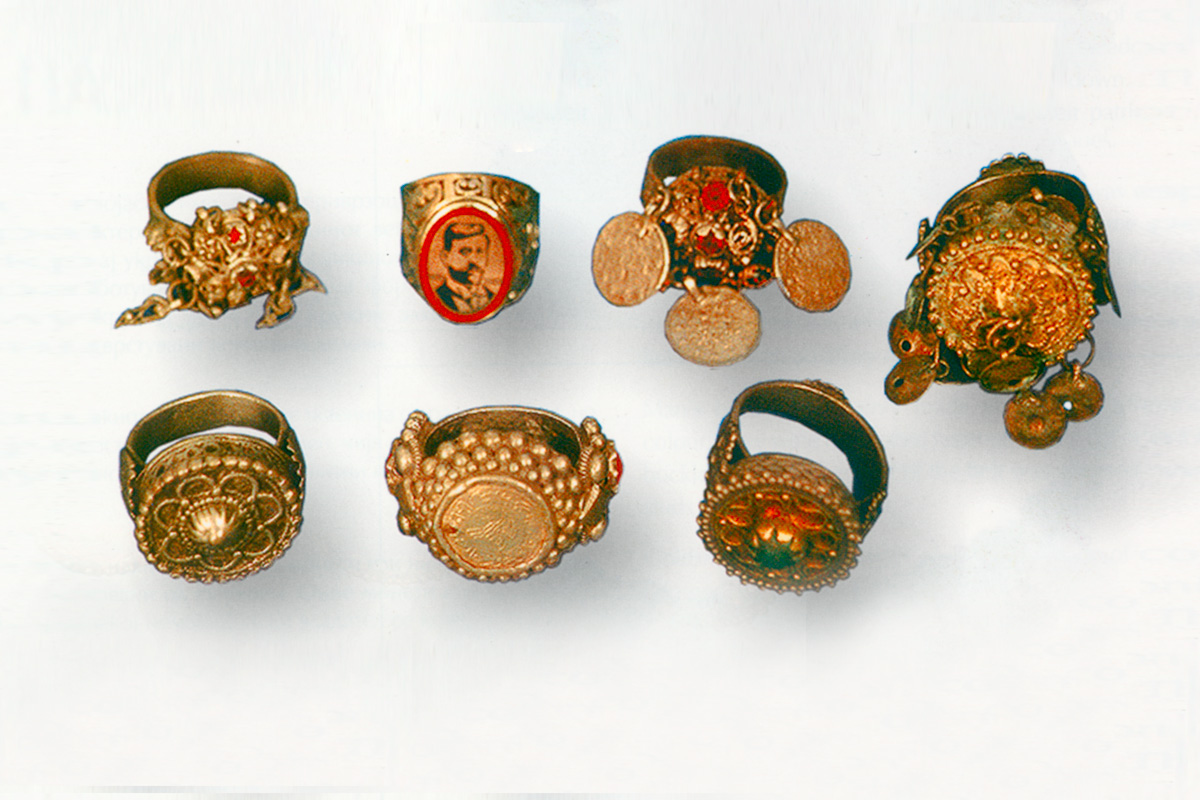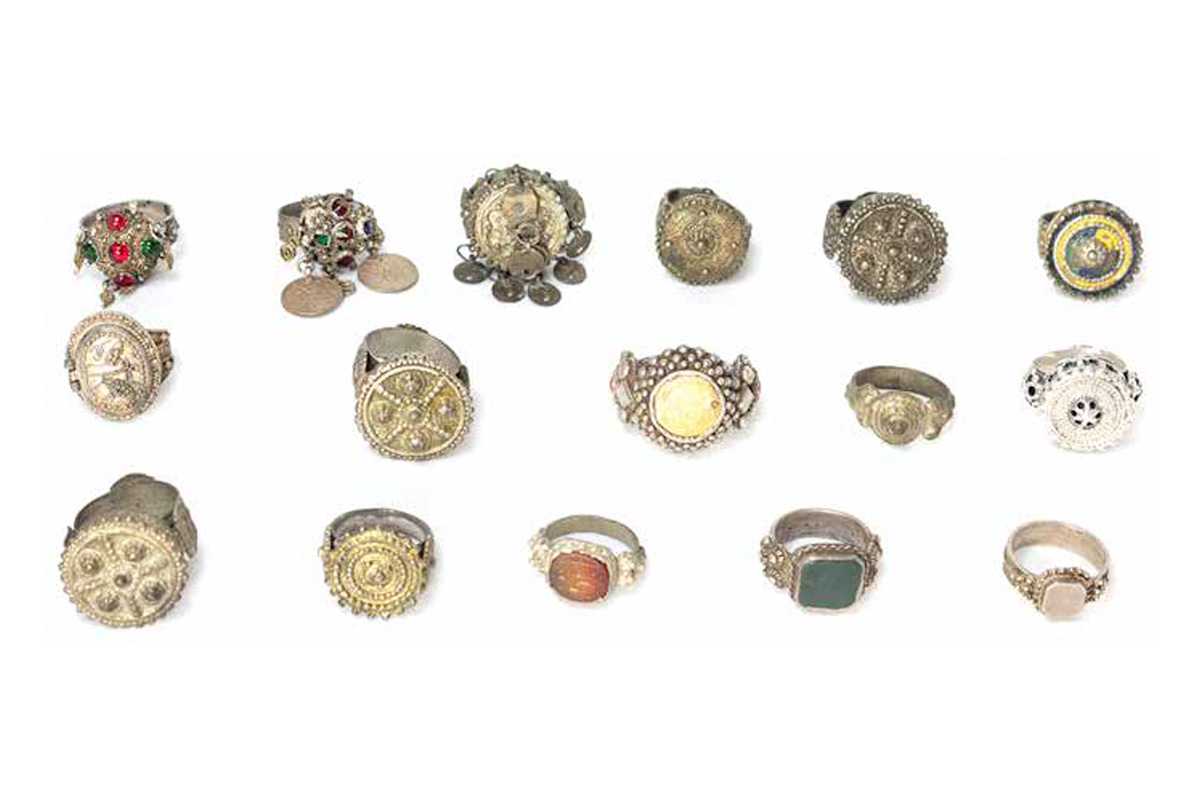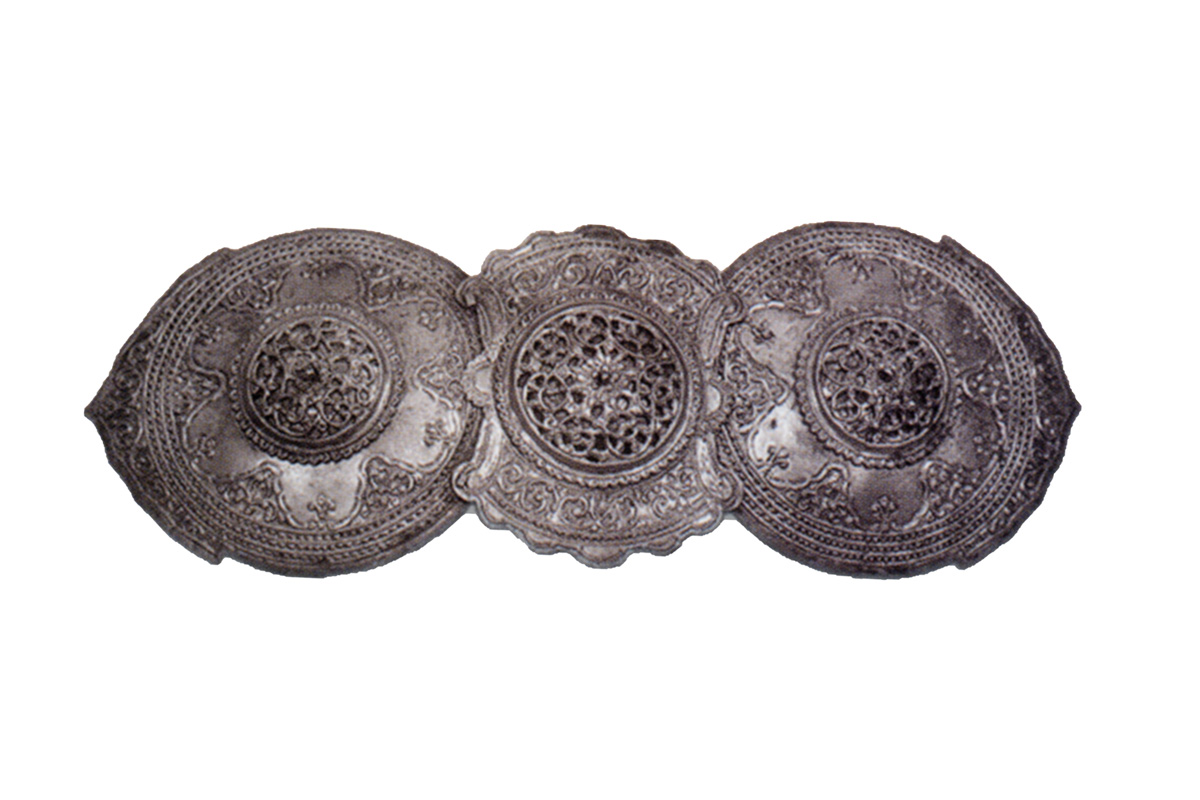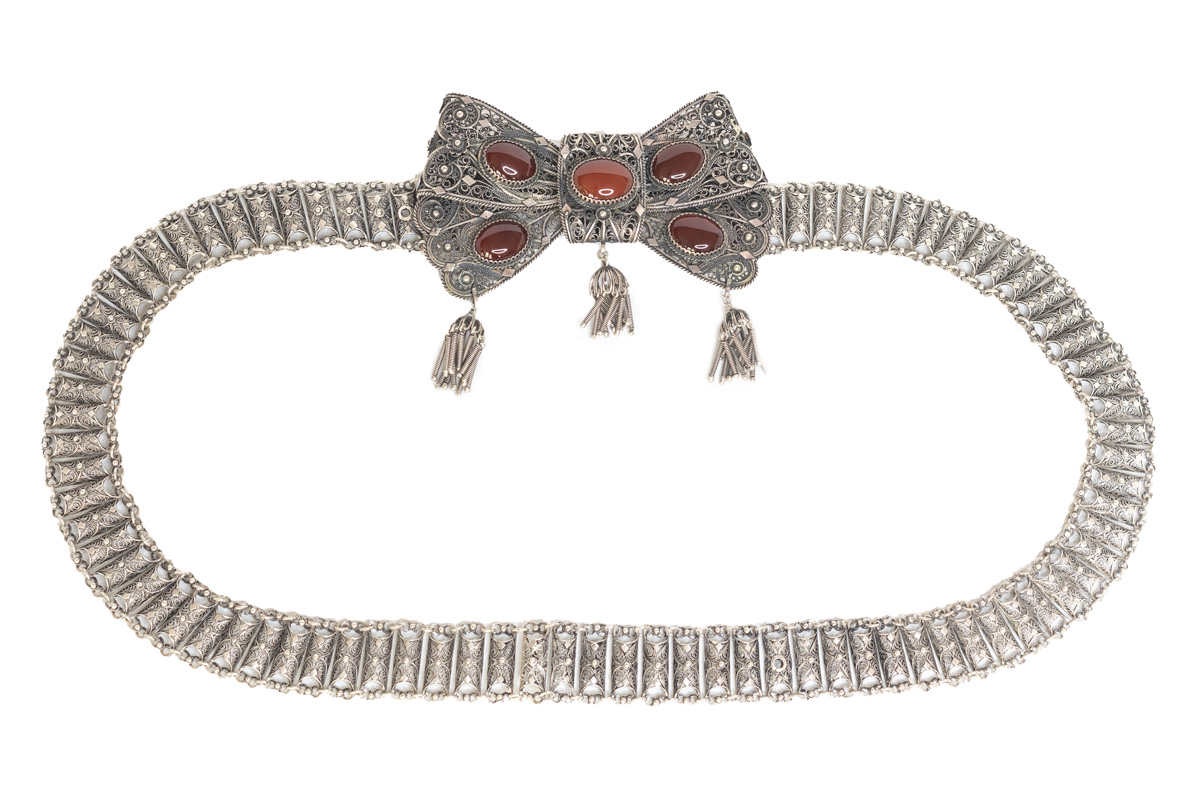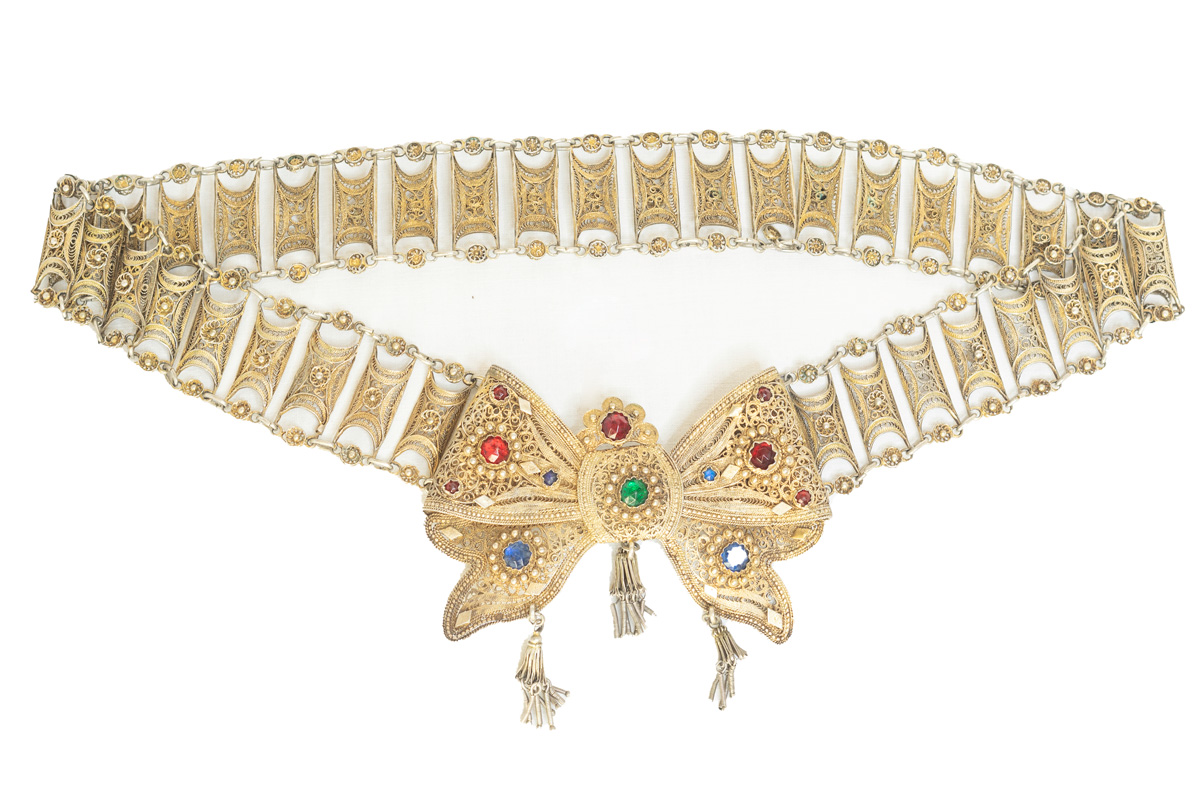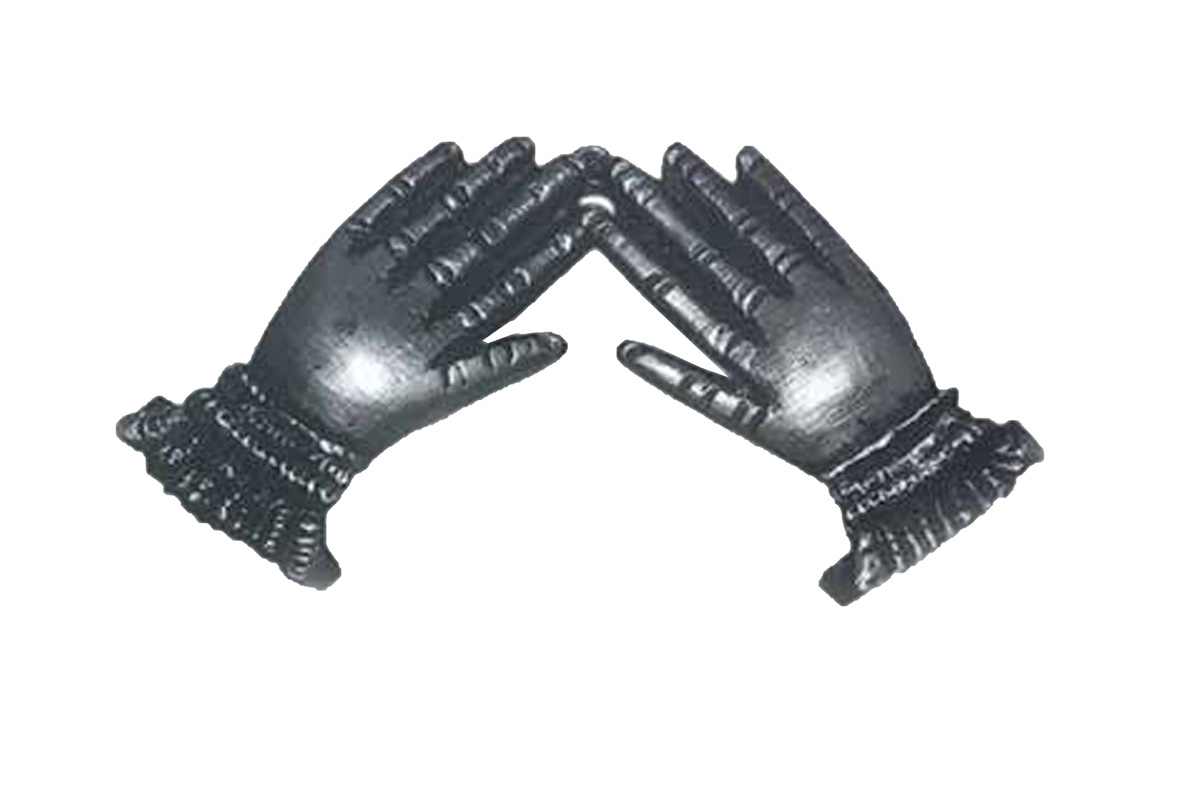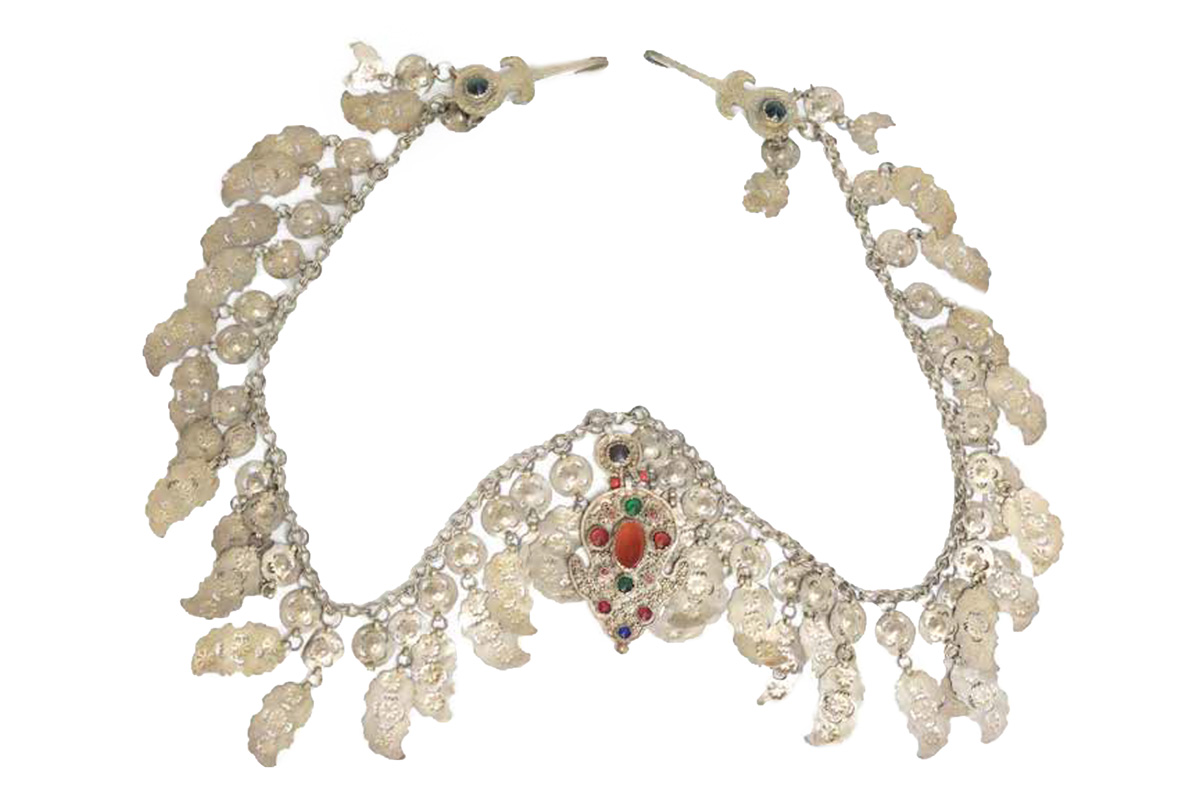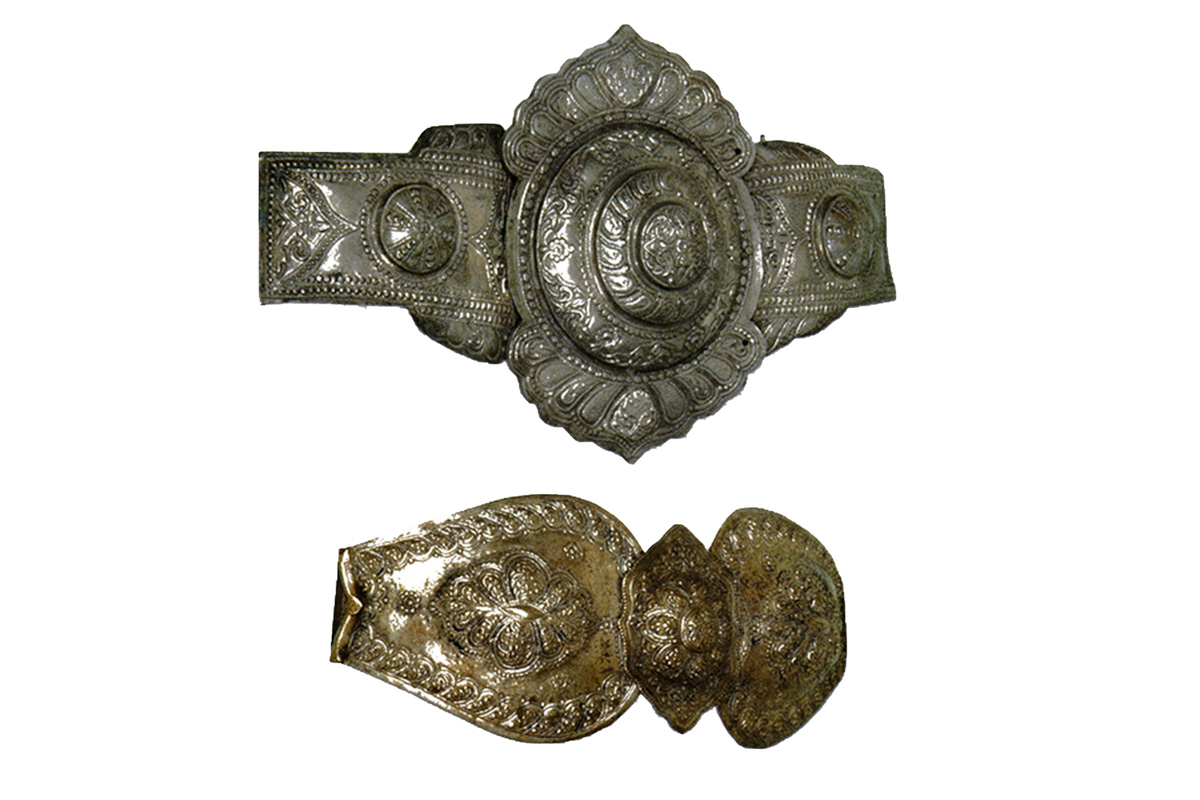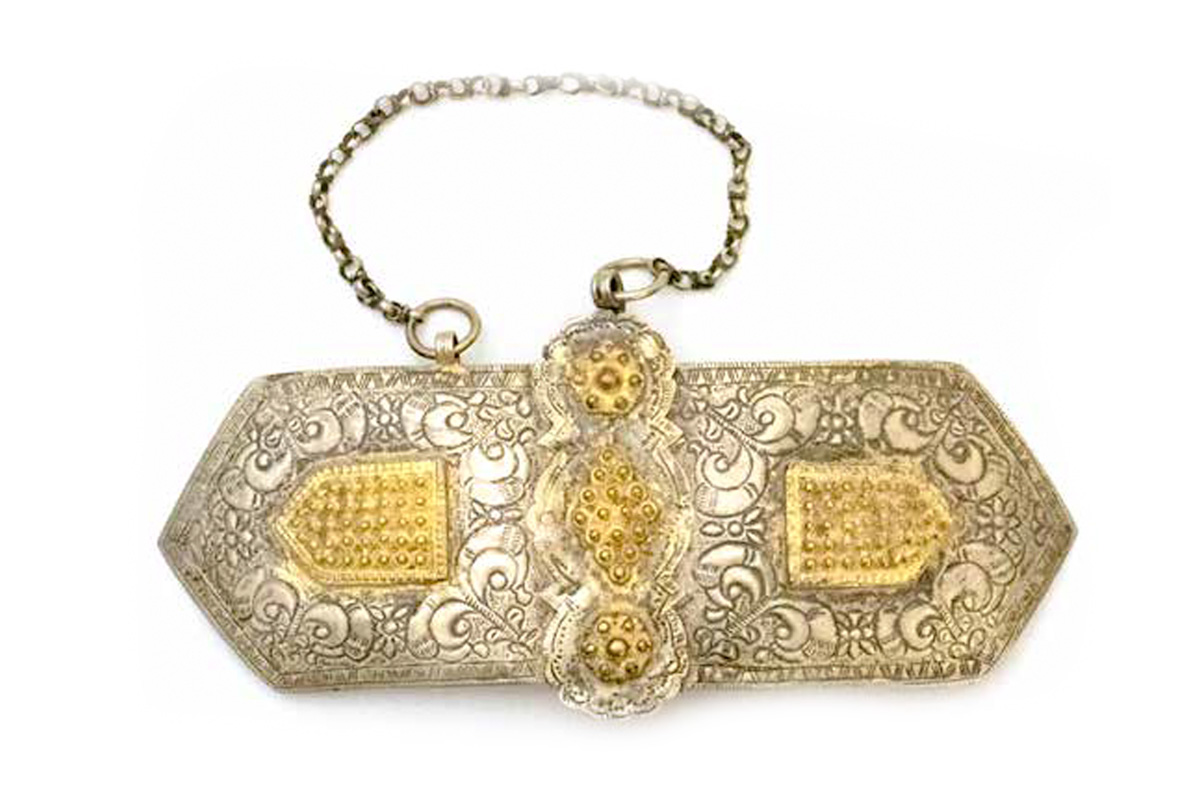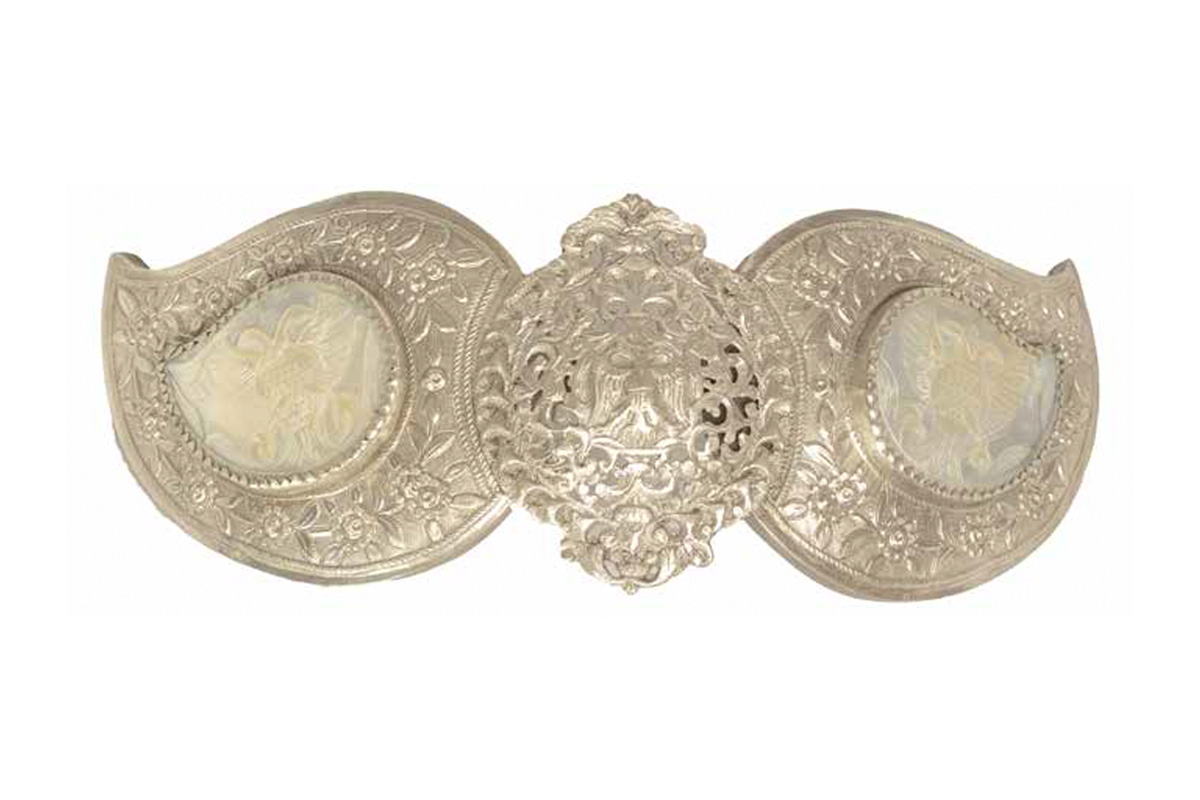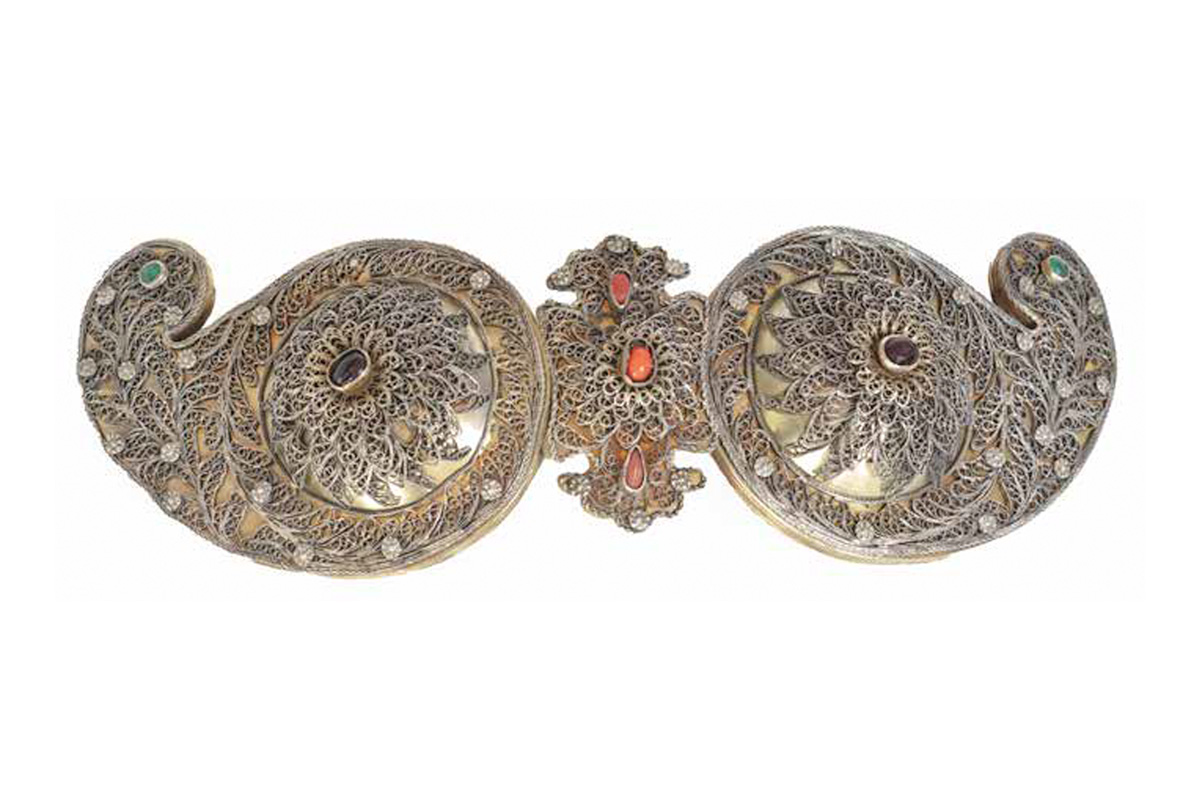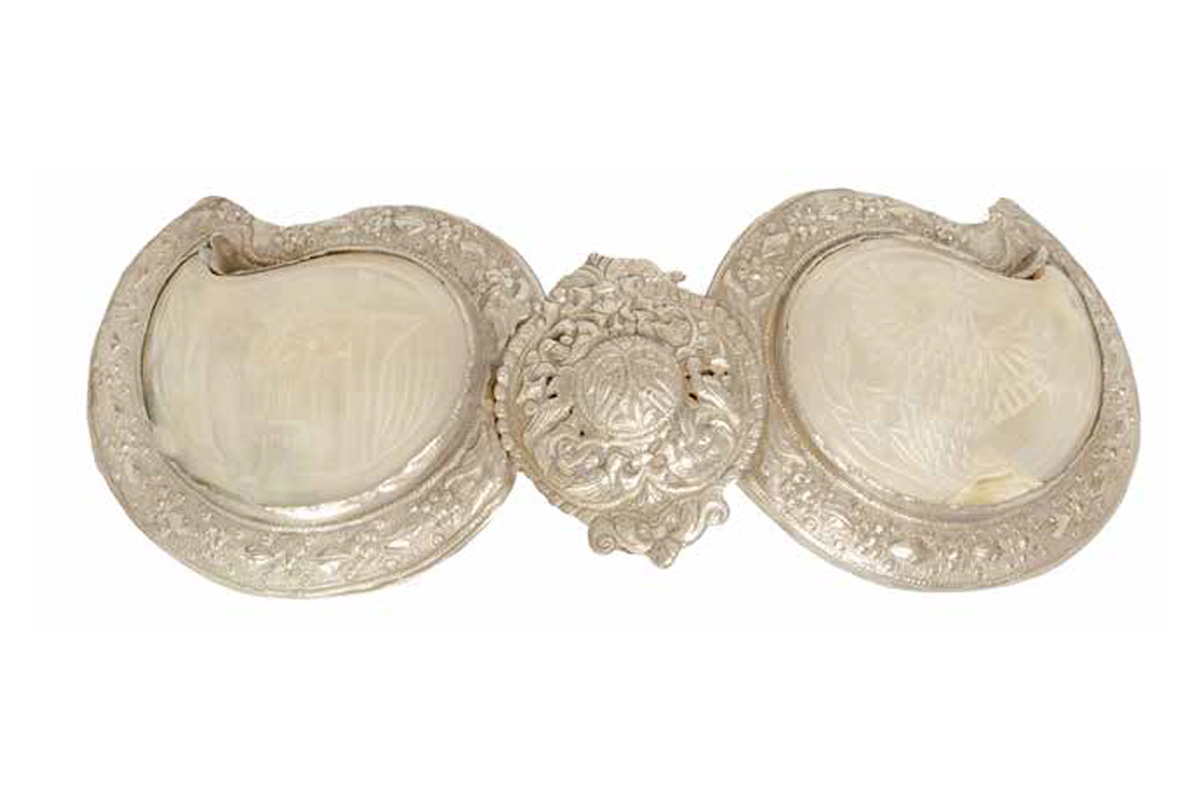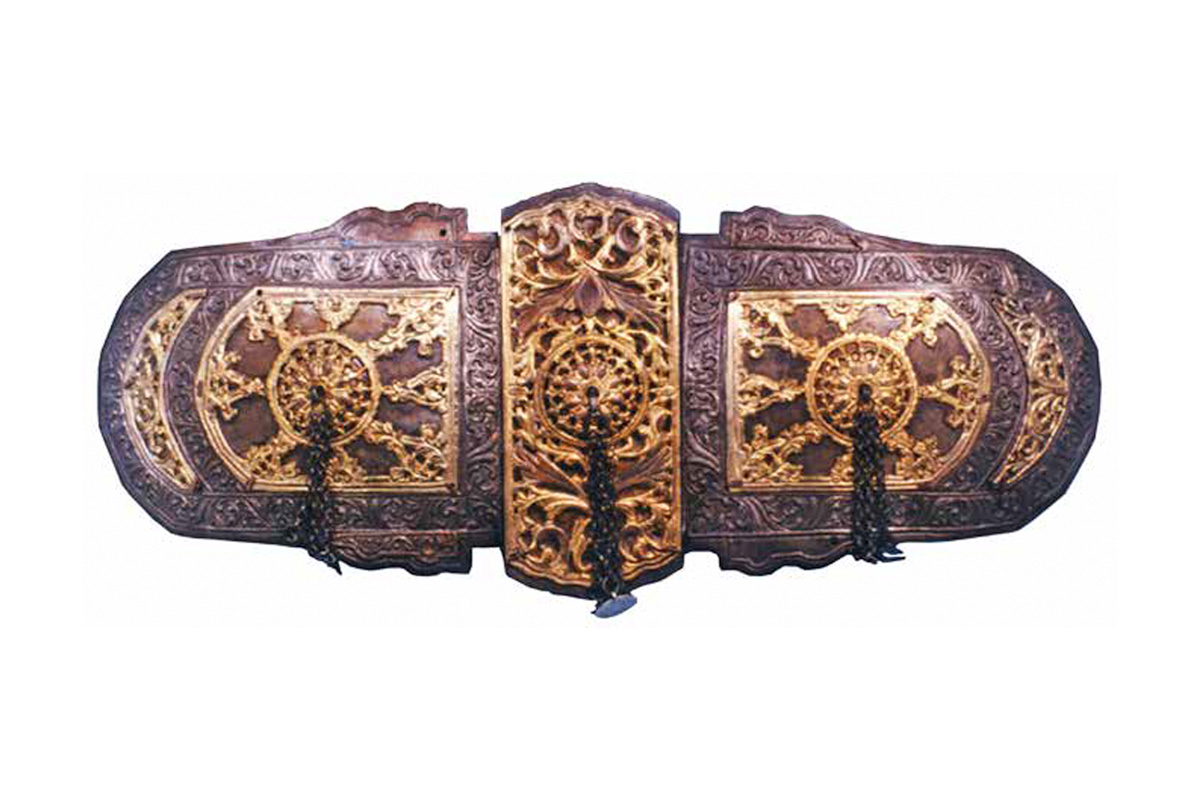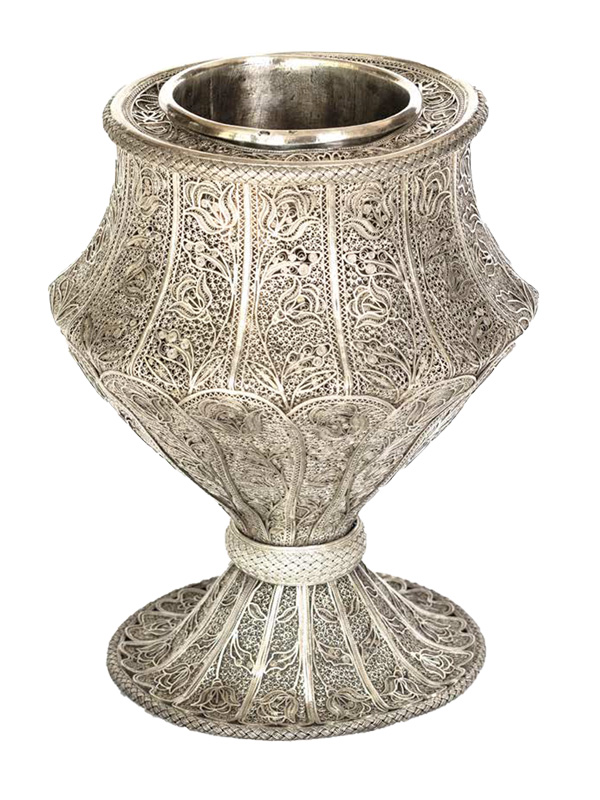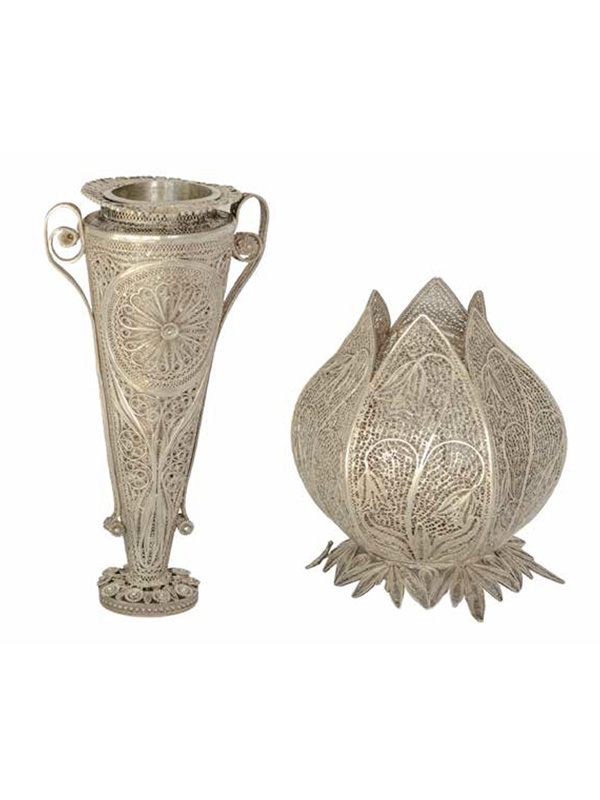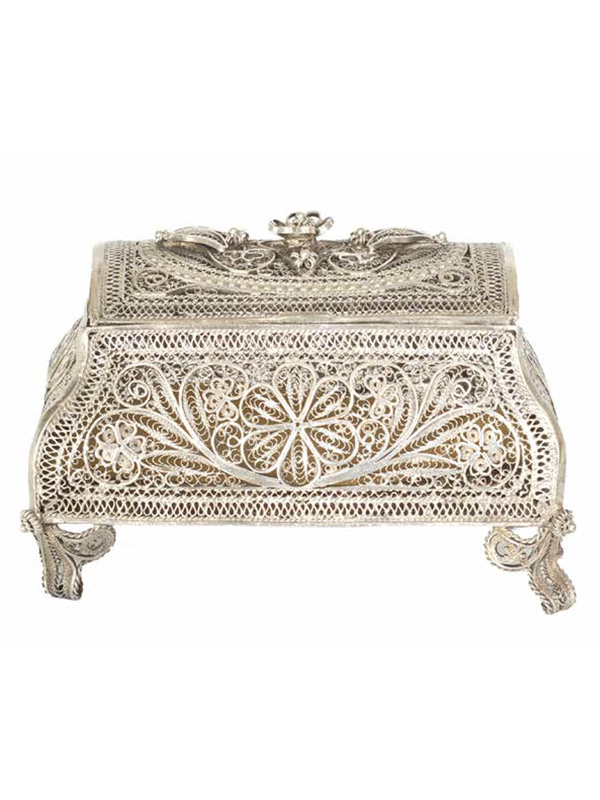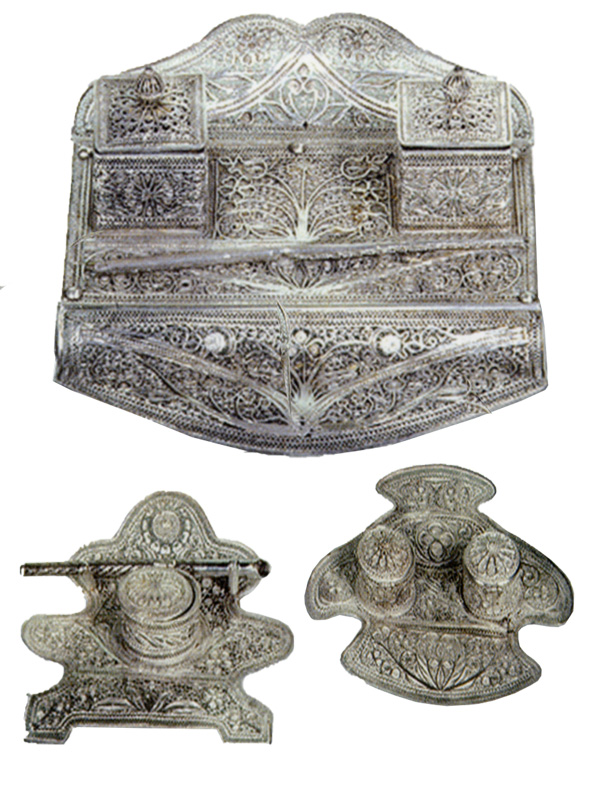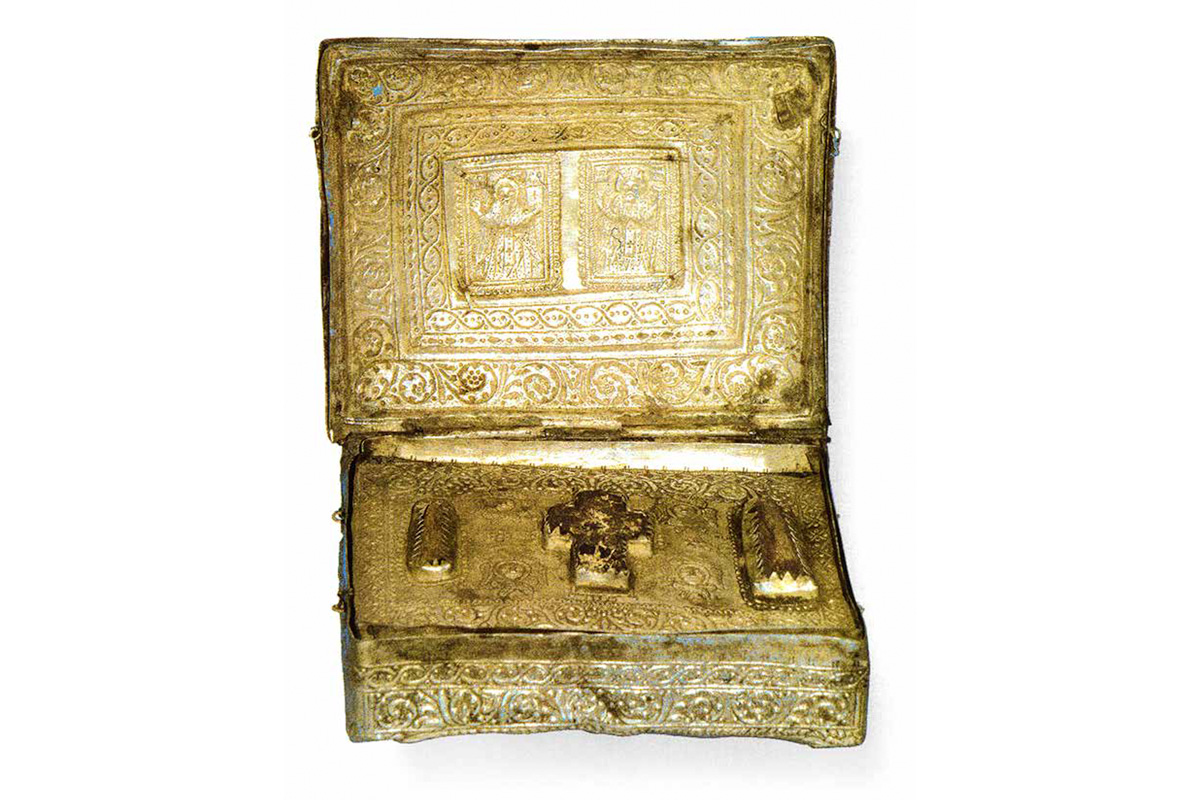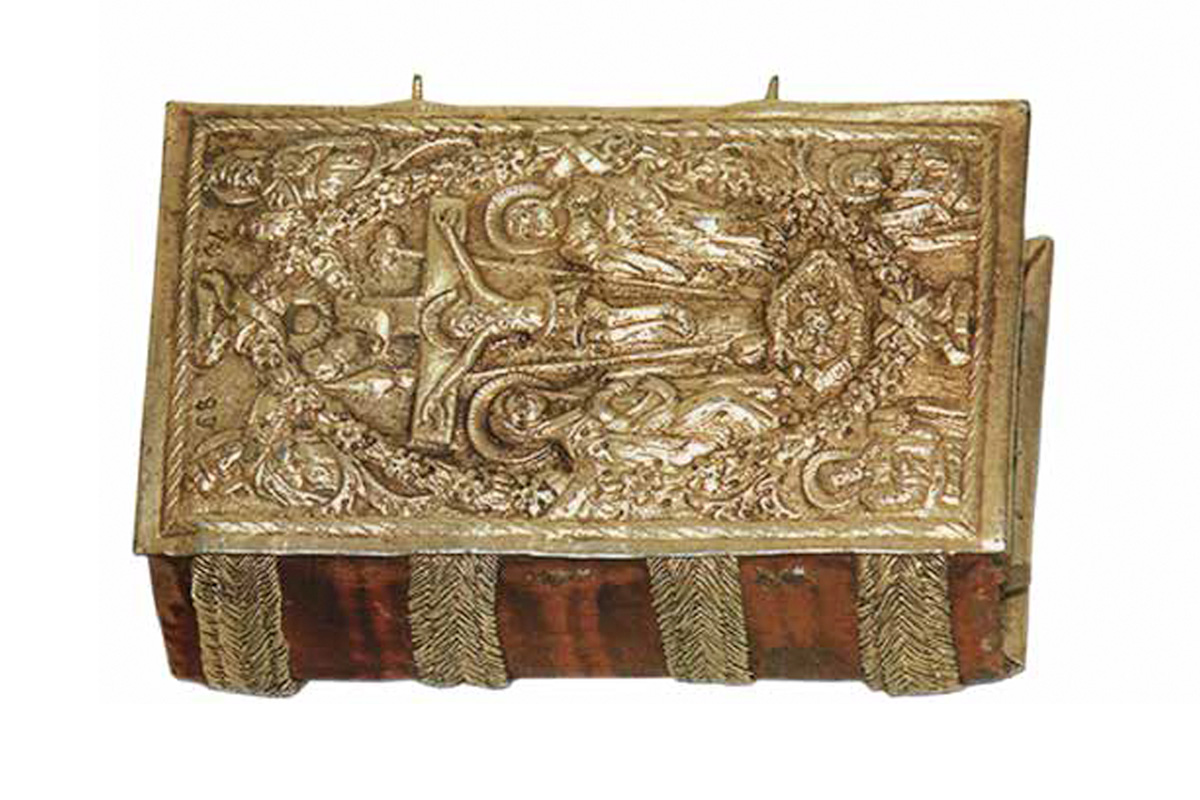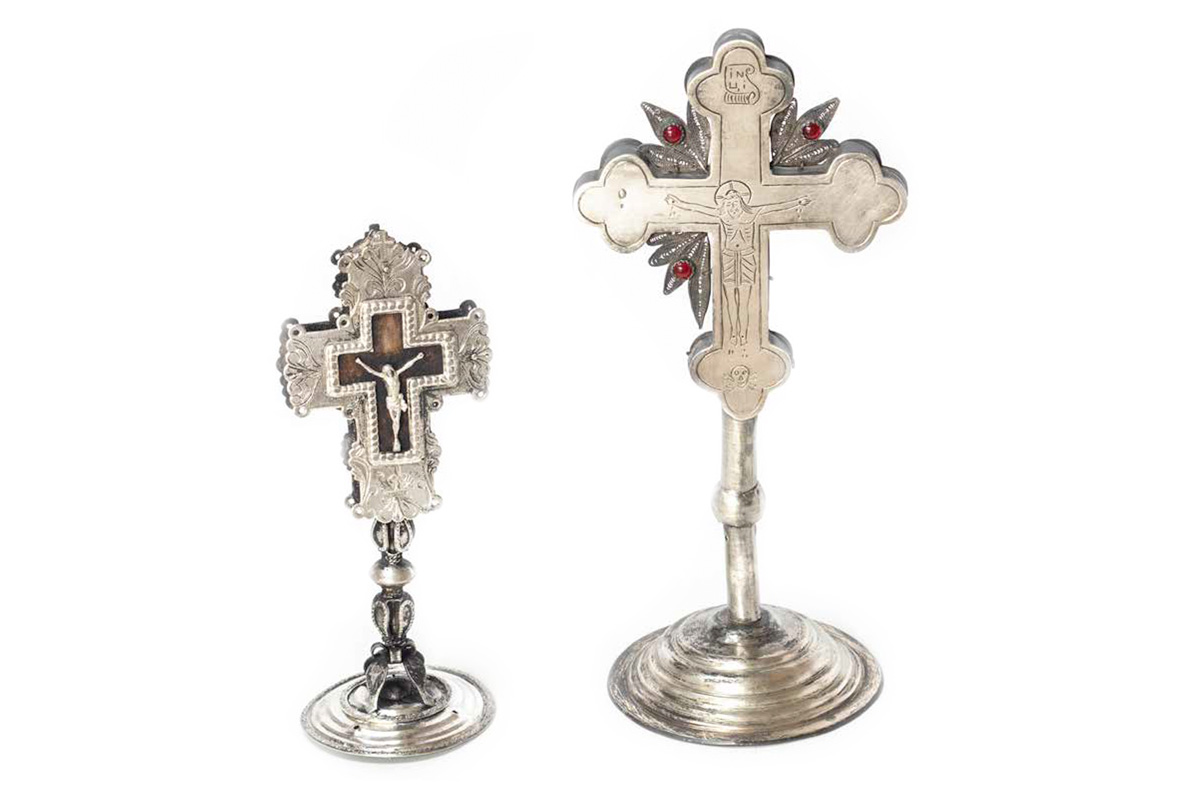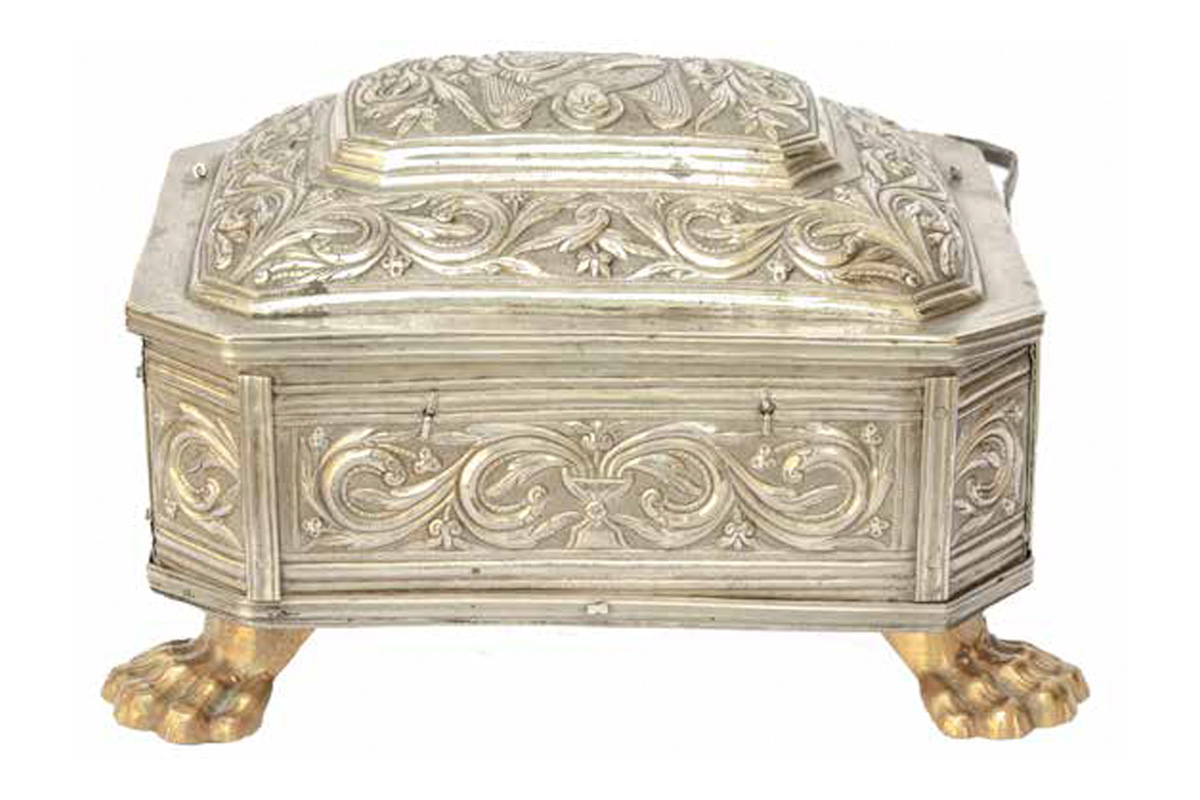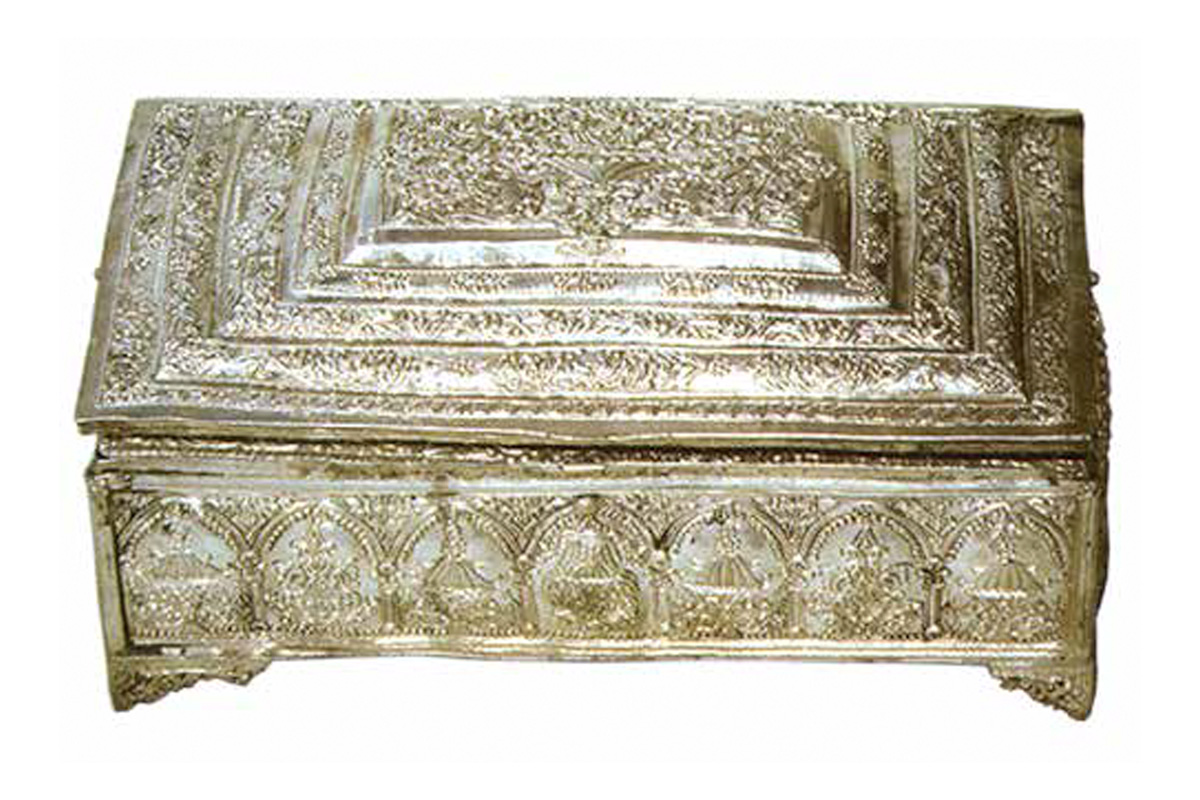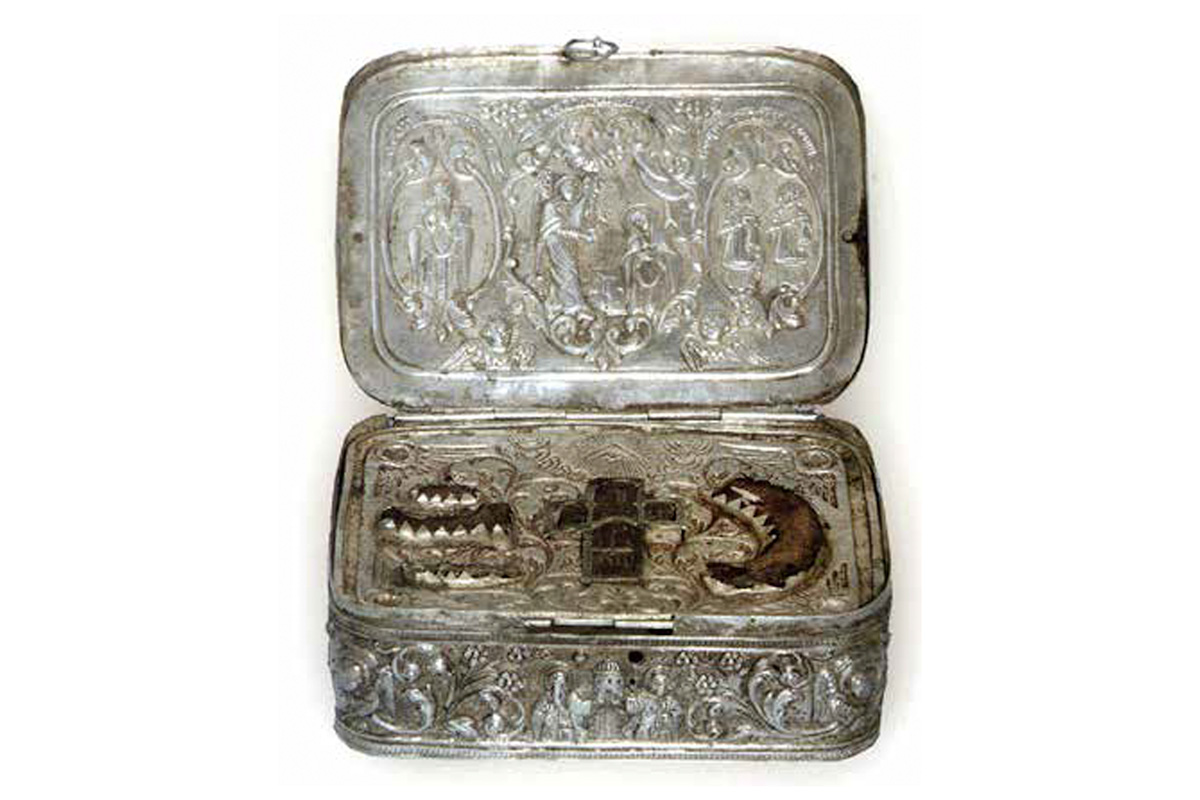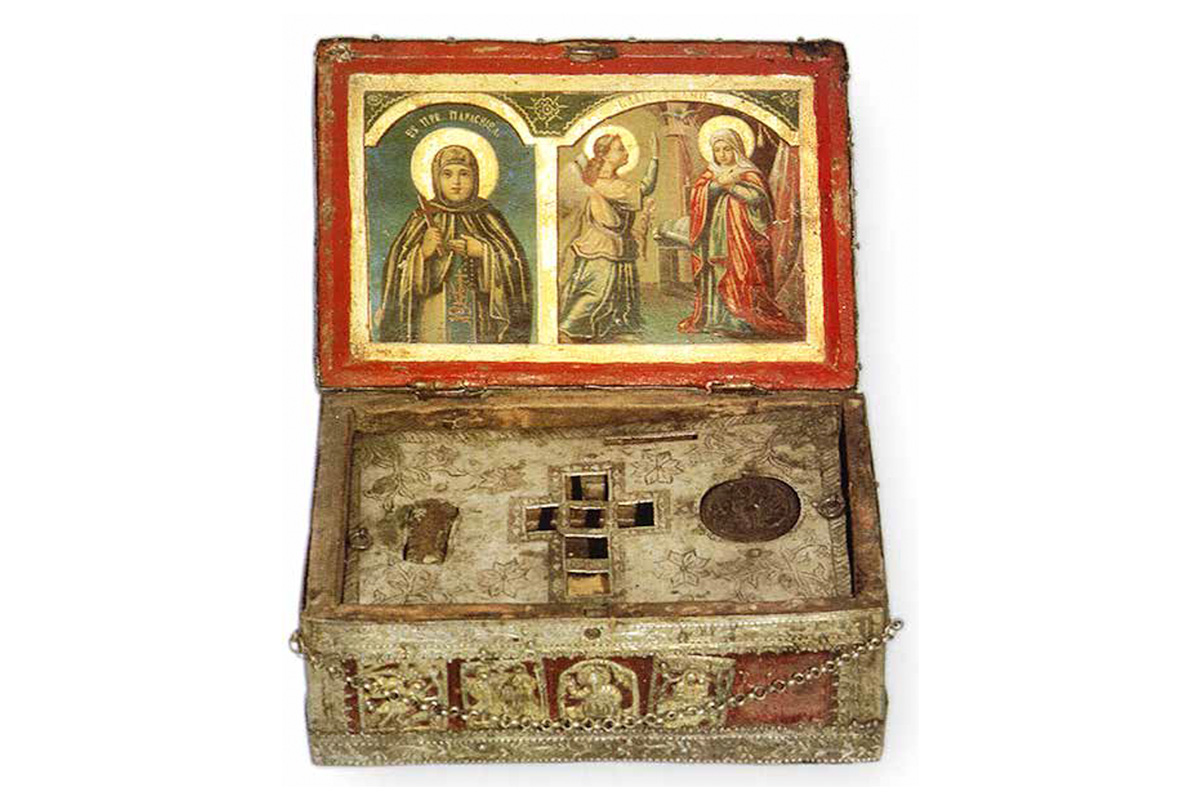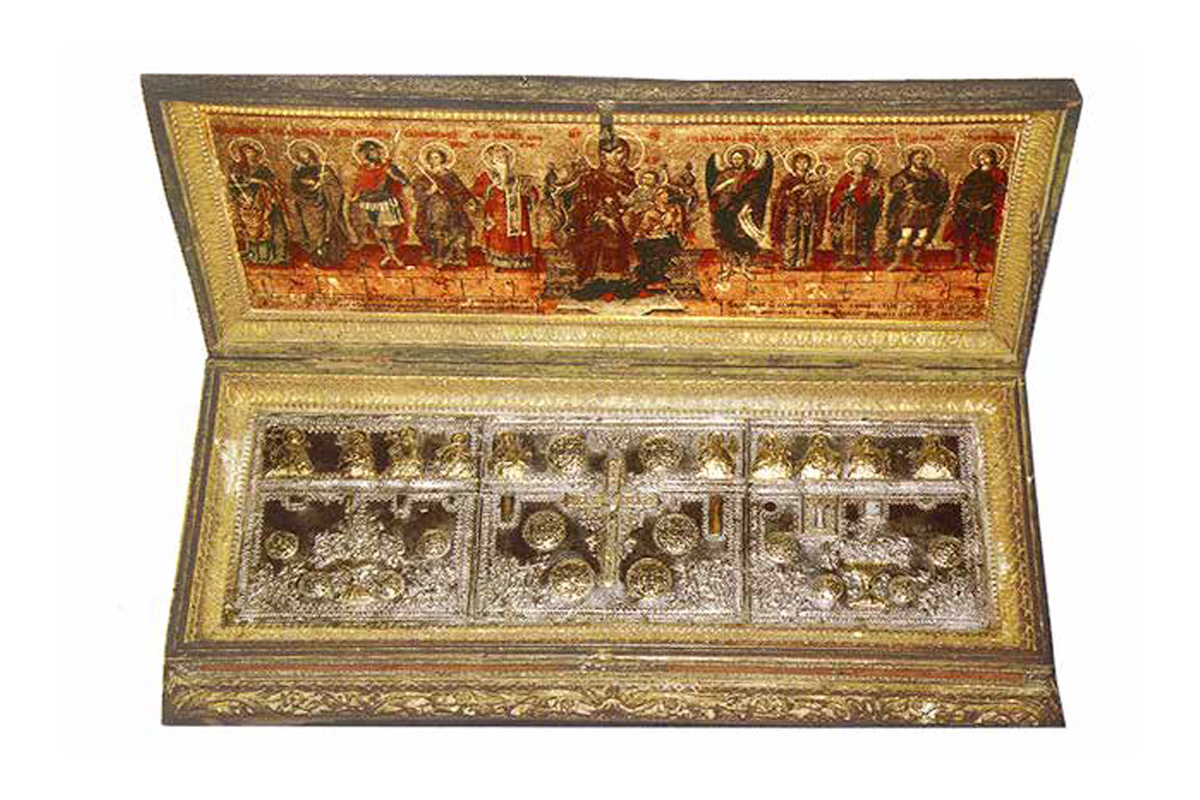Goldsmith`s trade in Macedonia
Ornamentation is as old as the mankind. However, as a professional activity, the manufacture of jewelry originates from the later period of the human development. Goldsmiths have been highly gifted and inventive artisans from time immemorial. The archaeological findings of the Macedonian soil to a great extent testify to their considerable skill. A lot of these findings are kept in the showcases of our museums as well as in foreign institutions.
Most often goldsmith’s trade was hereditary; it was passed on from generation. For example, the Vangel Dereban is the sixth generation of the goldsmith’s family Struga, the Dereban family (Gjore, Mitre, Igno, Petrush, Aleksandar and Vangel; his brothers, Lambe and Nikola). The other branch of the Dereban family gave the following goldsmiths: Mile, Yone, Duke and Slave). The same happened in the other goldsmith’s centers.
The goldsmith’s trade in Macedonia flourished in the Middle Ages and reached its climax in the XVIII century and in the first half of the XIX century. In that time the biggest goldsmith’s centers were Struga, Ohrid, Bitola, Salonica, Kostur, Voden, Seres, Drama, Kavala, Skopje, Prilep, Krushevo, etc. The most
distinguished goldsmiths protected their articles with a seal. Goldsmiths were organized in their guilds in Macedonia. The Macedonian goldsmith’s articles were highly esteemed in Macedonia and abroad.
Jewellery
Jewelry is worn as a symbol, ornament and for apotropaic purposes. Jewelry is made of precious metals, but also of other metals and its division is usually done according to its purpose and the parts of the body on which it is worn – head, neck, arms, clothes. Jewelry as an ornament is often decorated with rare / precious stones. Jewelry also includes jewelery for the household and the Church. Although most of them are used to satisfy various needs, they are also a decoration of the home, of the Church. Jewelry is always in abundance. Such works belong to the works of Macedonian art.
Types of jewellery
Most often it is categorized according to the parts of the body-head jewelry, neck jewelry, hand jewelry and jewelry of clothes.
HEAD JEWELLERY
NECK JEWELLERY
HAND JEWELLERY
JEWELLERY – AN INTEGRAL PART OF THE CLOTHES
GOLDSMITH`S ARTICLES
GOLDSMITH’S ARTICLES FOR HOUSEHOLDS, DECORATION AND OTHER PURPOSES
In the past goldsmiths made pots and ornaments for households as well as plates and cutlery, baskets (for bread, spoons, etc.) platters, small cups, (fincan), glasses, desert sets, coffee sets, tea sets, pitchers, kettler, sweet bowls, candlesticks, decorative spice vessels, spice set holders, vases, toilet sets (toilet table with mirror, wall mirrors, wash mirrors wash – basins, jewelry boxes, perfume boxes, powder boxes, perfume bottles, bells, brushes, combs, scissors, vanity bags i.e. small boxes for shaving kits, etc.) etc. They also made boxes for valuable articles, ink boxes, penholders, cigarette cases, tobacco cases, etc.
Like with the jewellry, due to economic reasons, in that time there also appeared imitations of goldsmith’s articles for households. Here we can mention the silver – gild imitation articles or articles made of alloy; they are more successful silver imitations.
GOLDSMITH’S ARTICLES FOR THE CHURCH
The goldsmith’s articles made for the Church are numerous. These include: icon mountings, book mountings, crosses, monstrances, censers, chandeliers, chalices, discs, various boxes, communion spoons, archbishop’s and bishop’s scepters, cashboxes, candlesticks, small flat flasks for holy chrism, bridal wreaths, miters, etc.
Contact
Location
WORKSHOP OF FILIGREE – “VANGEL DEREBAN”
St. Kliment Ohridski No. 40
6000 Ohrid, R.S. Macedonia
